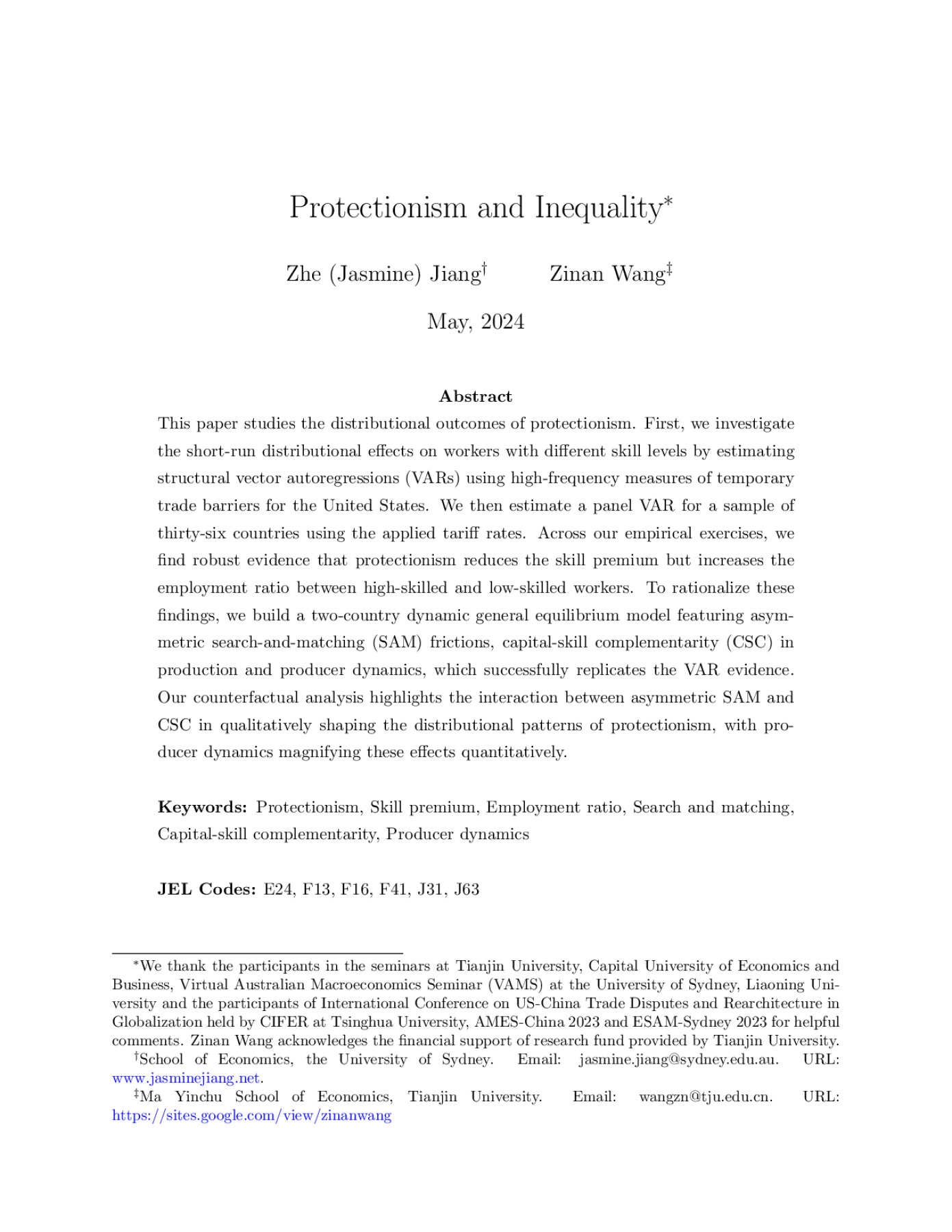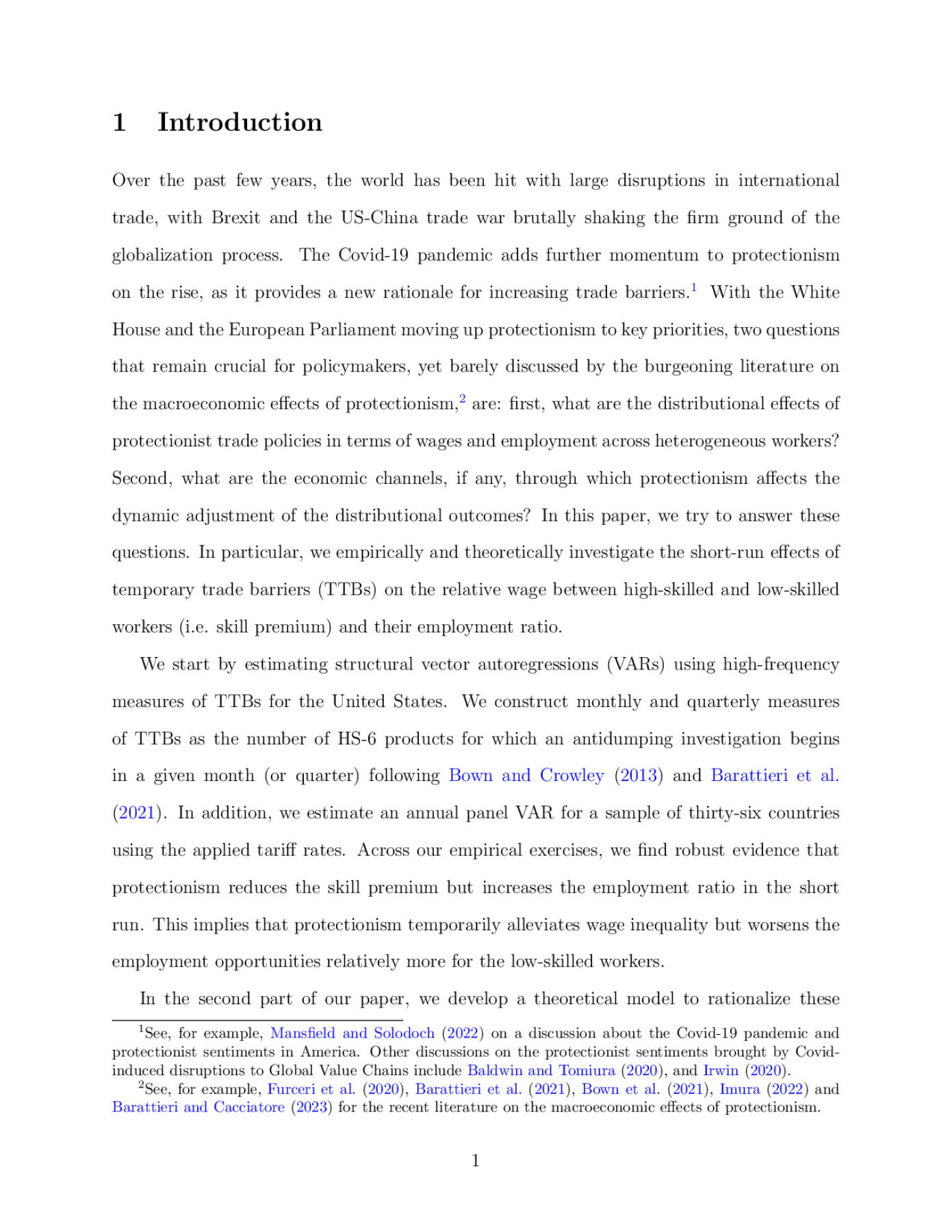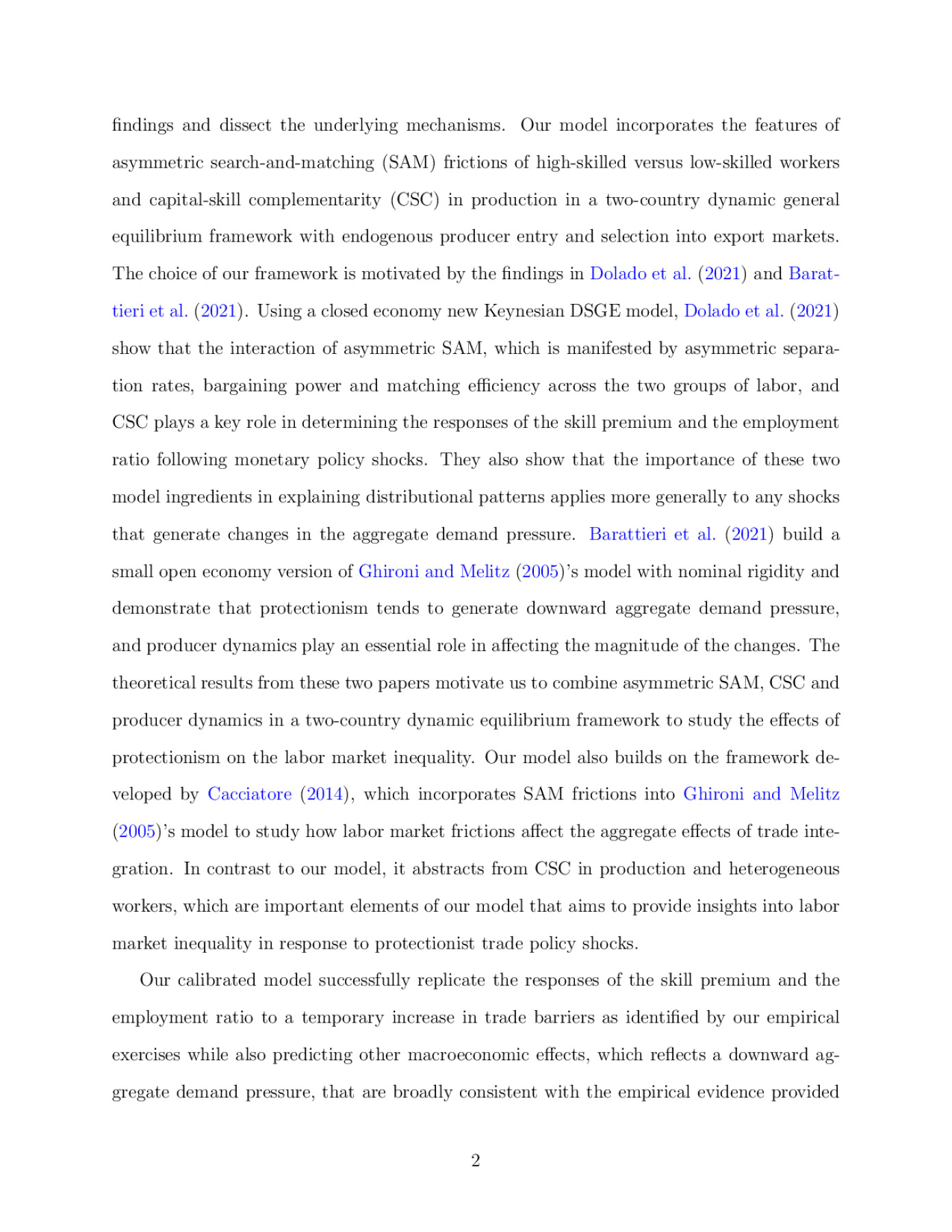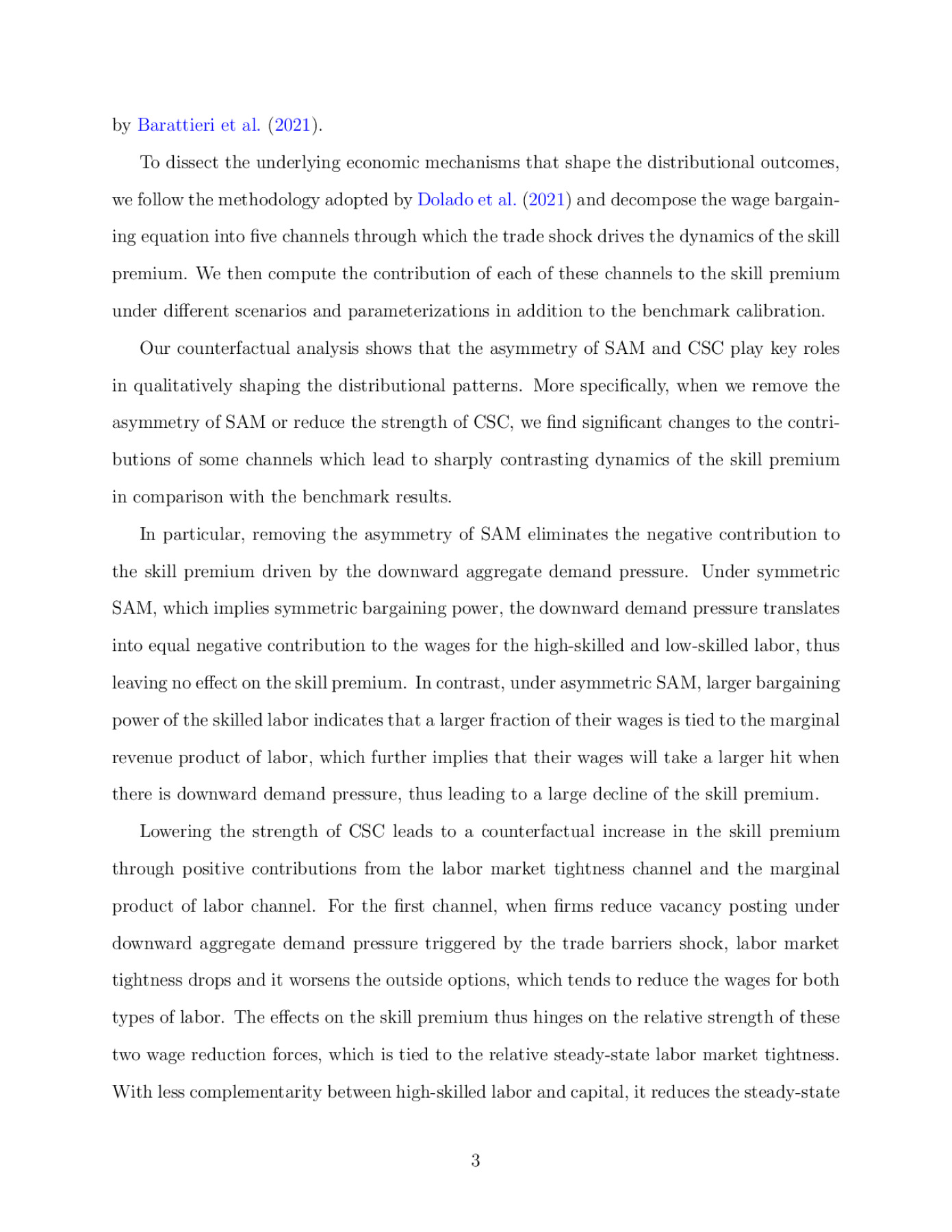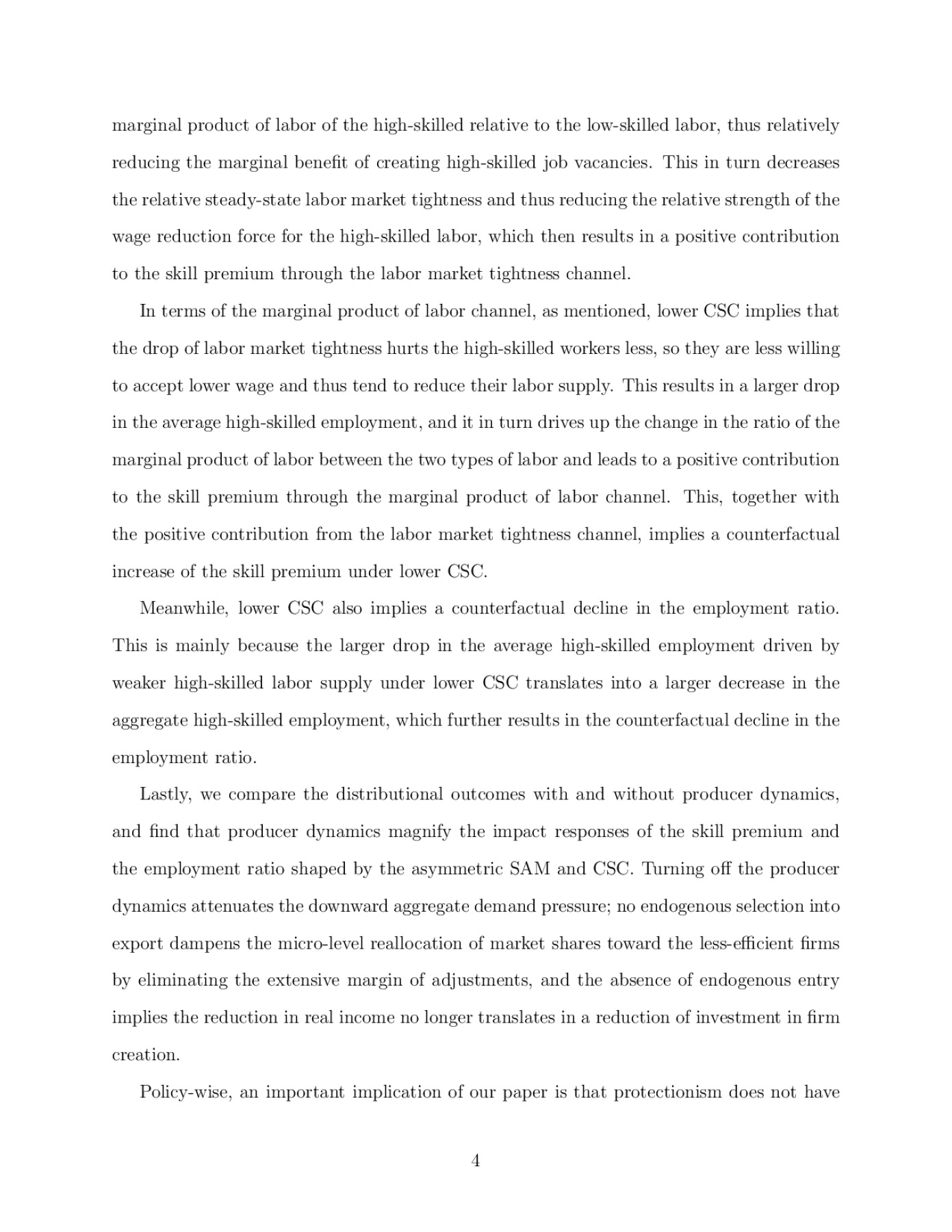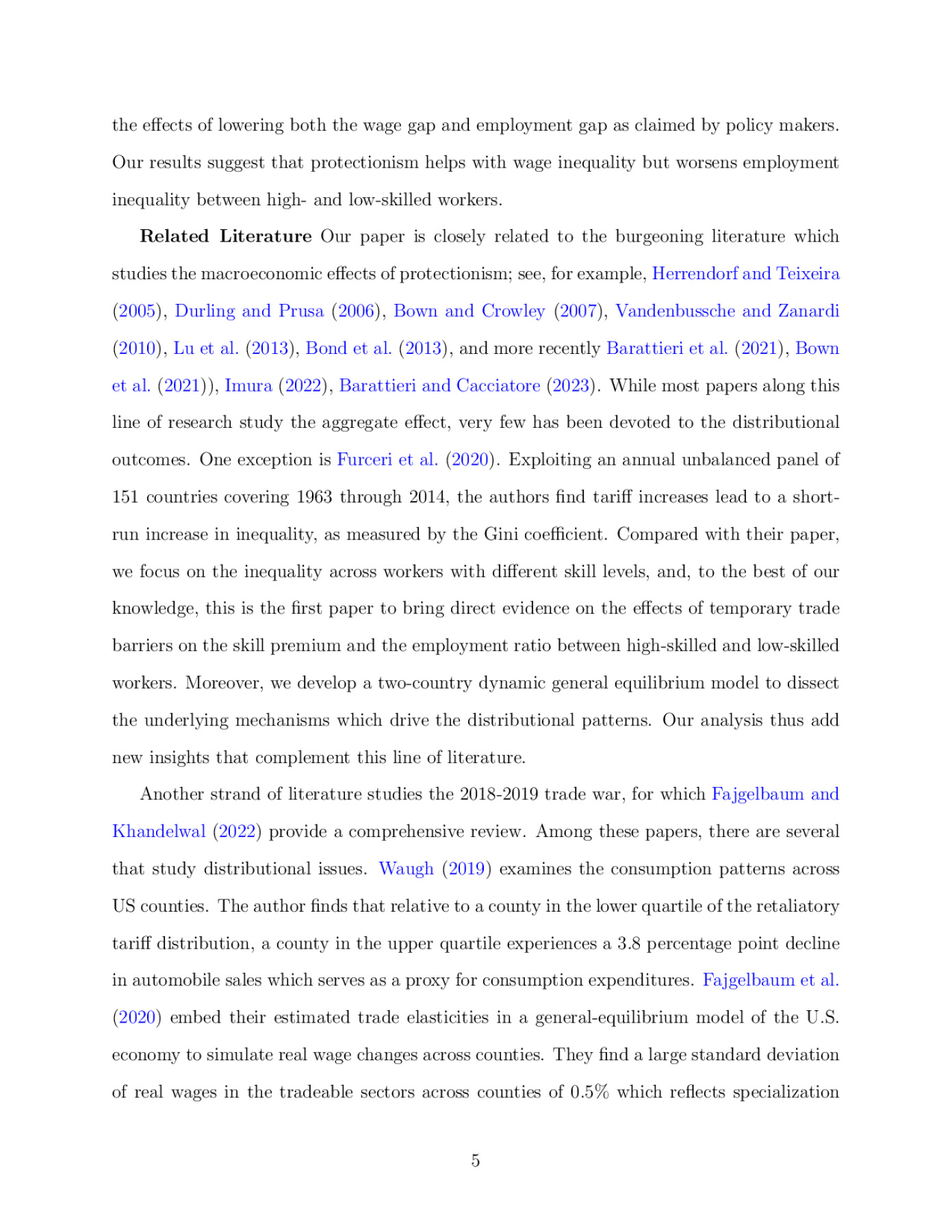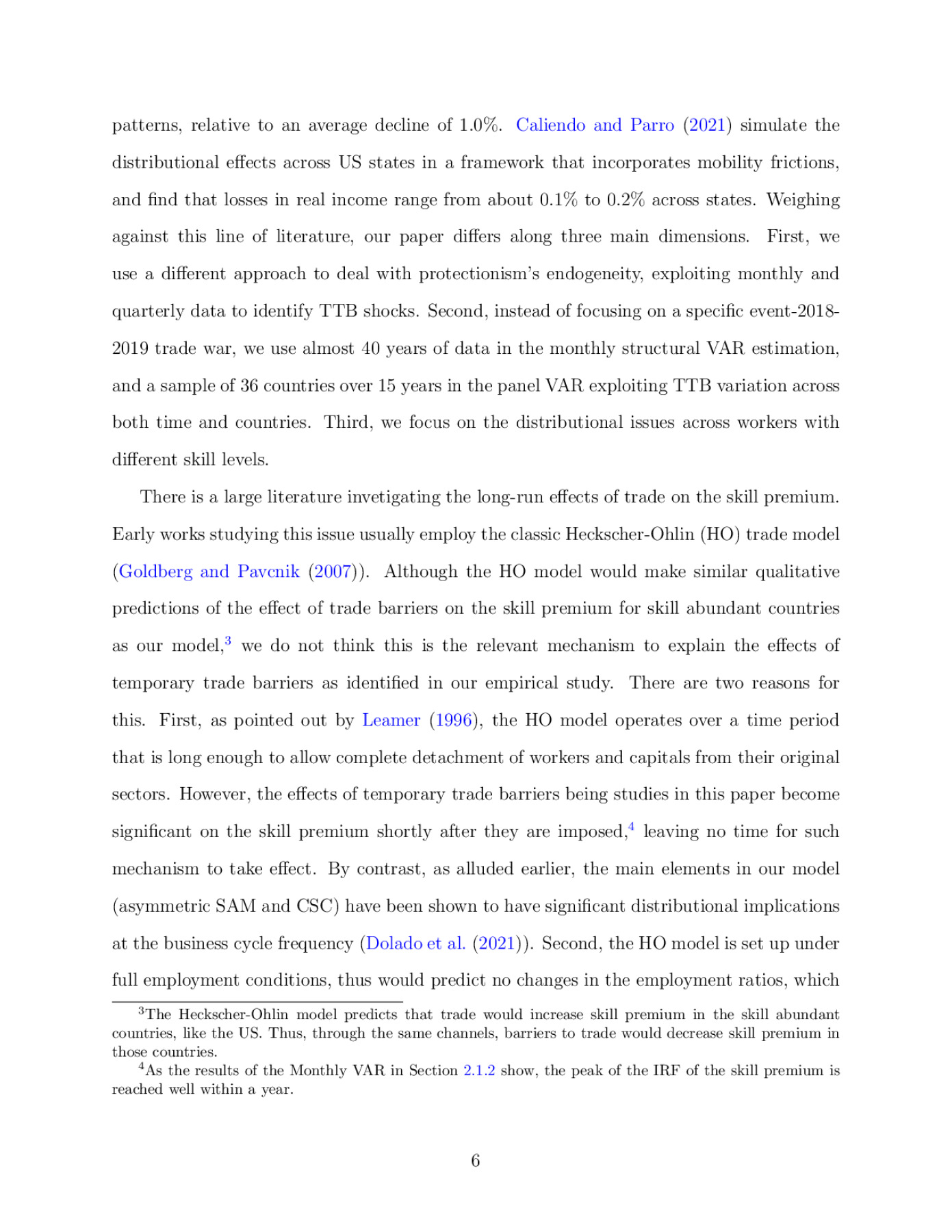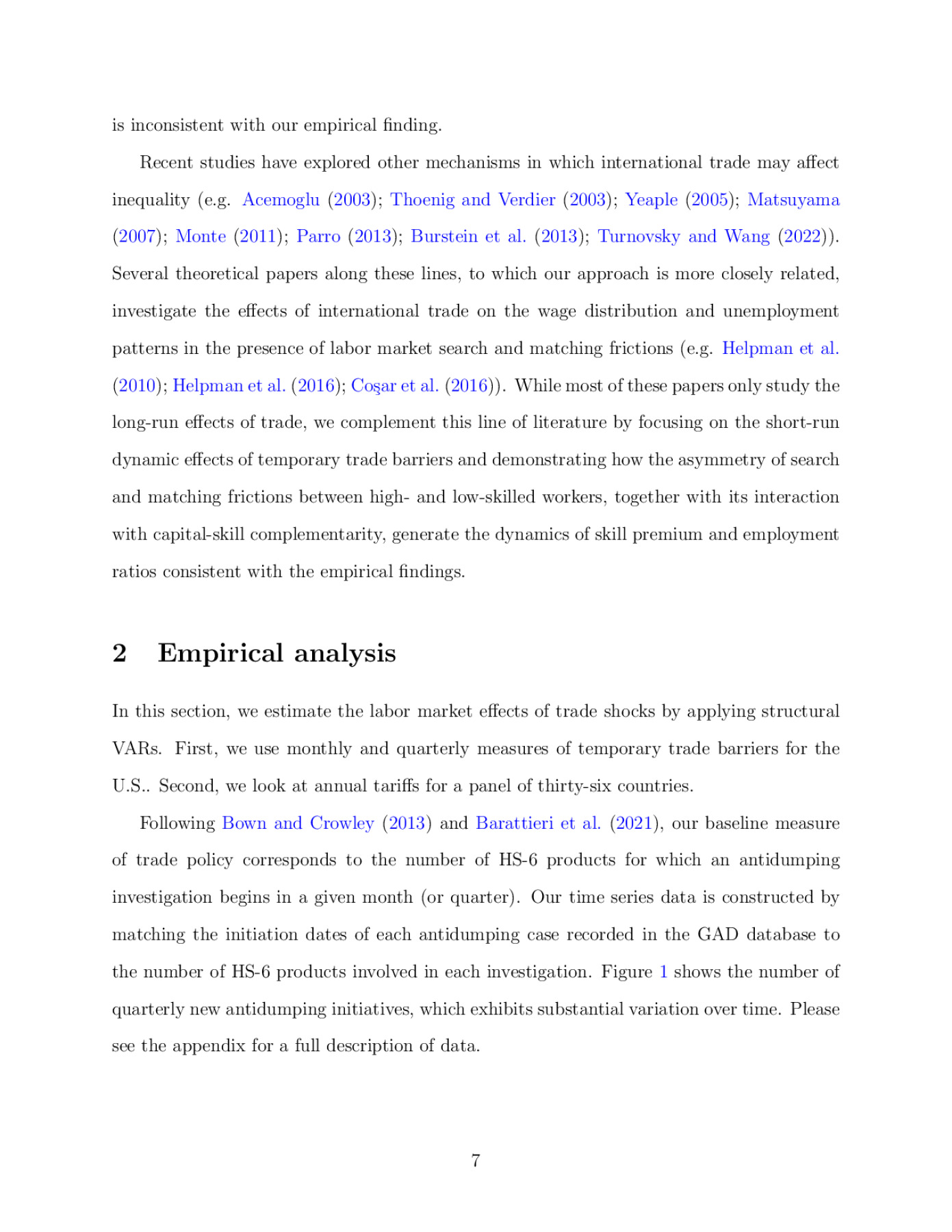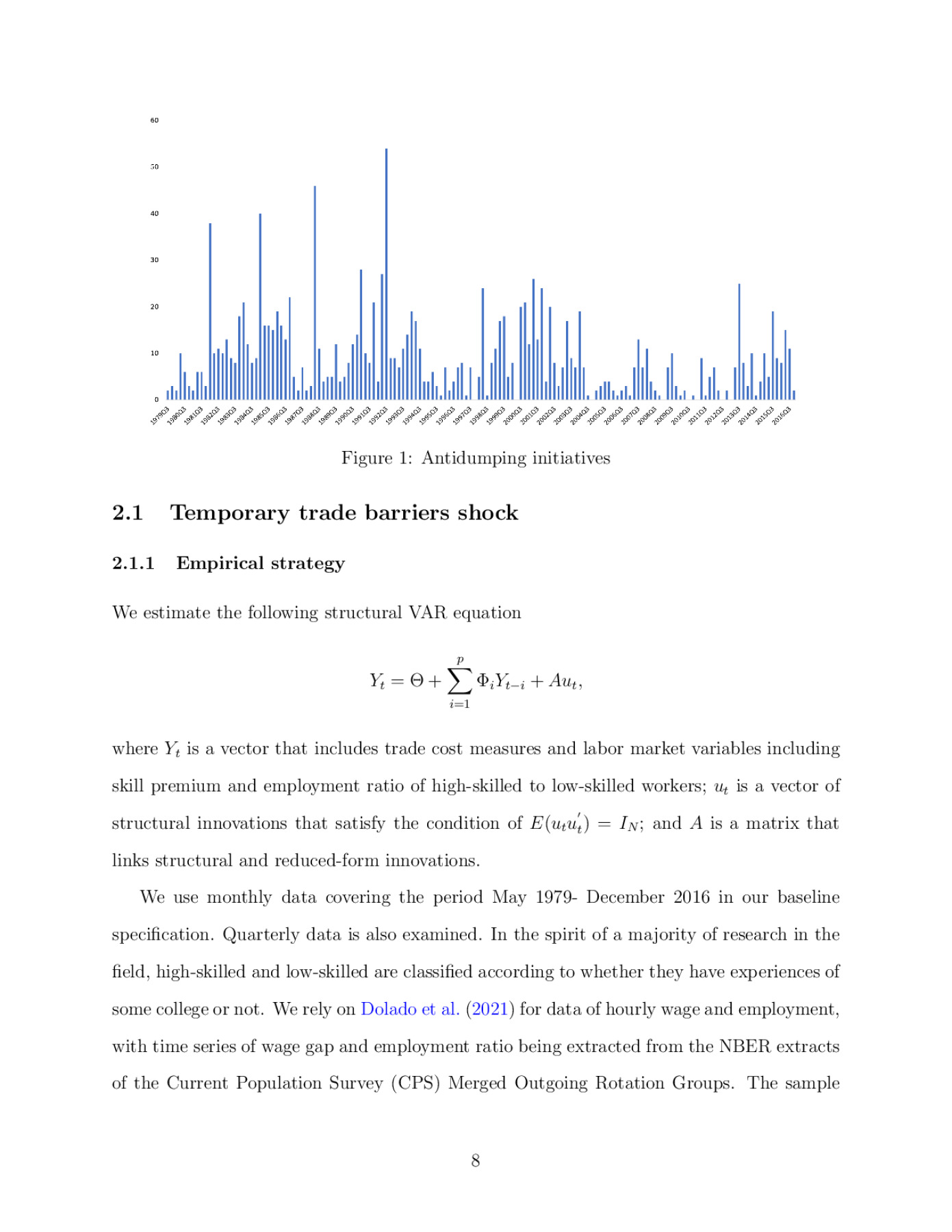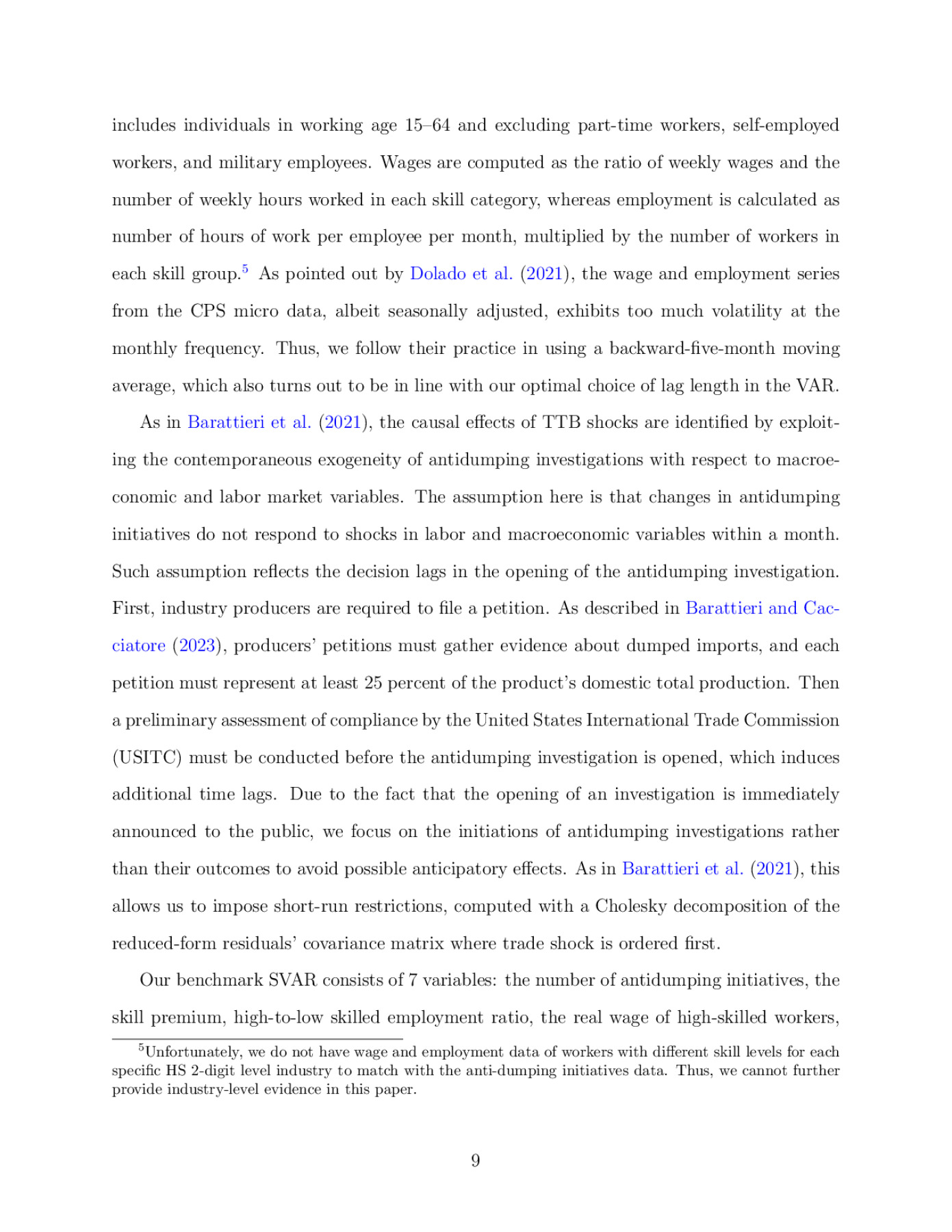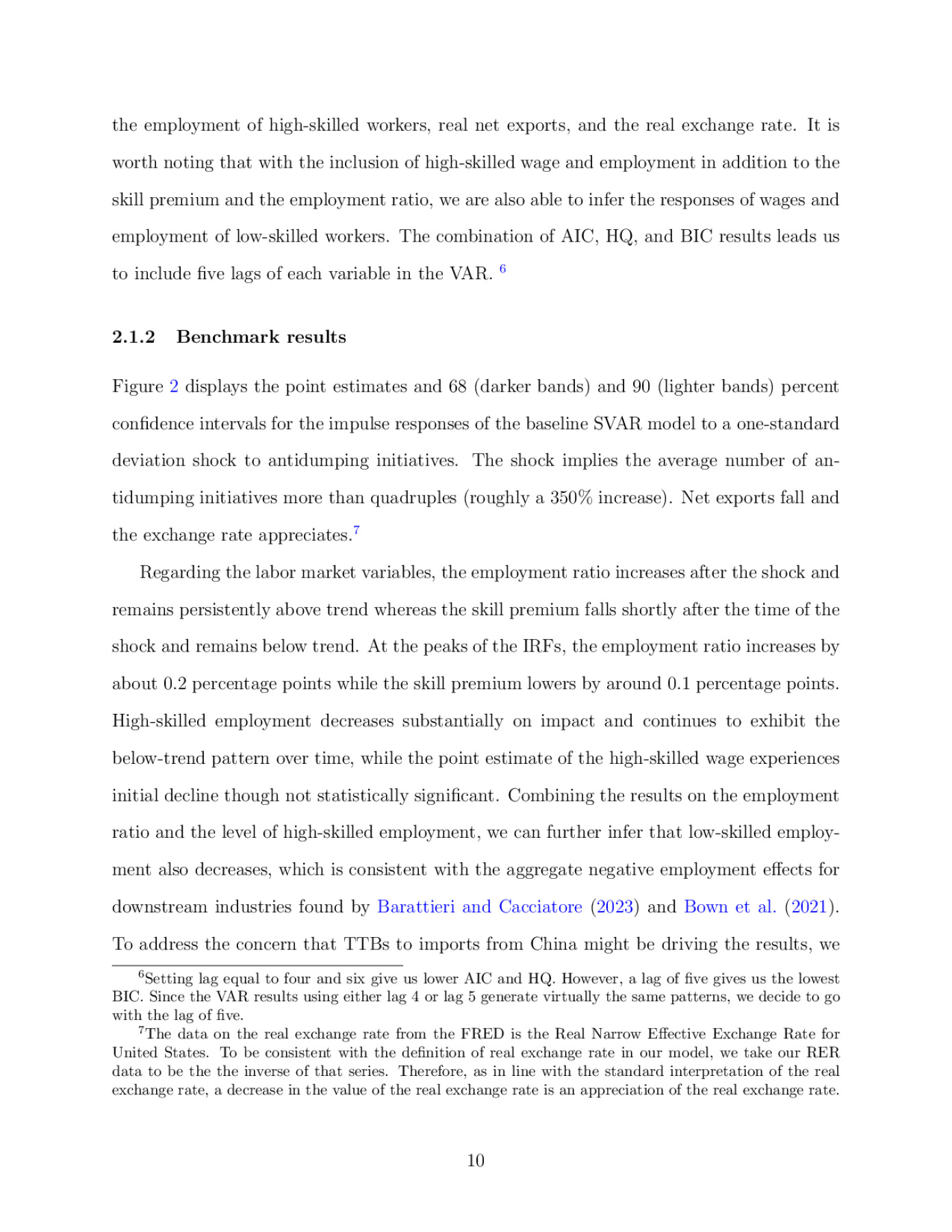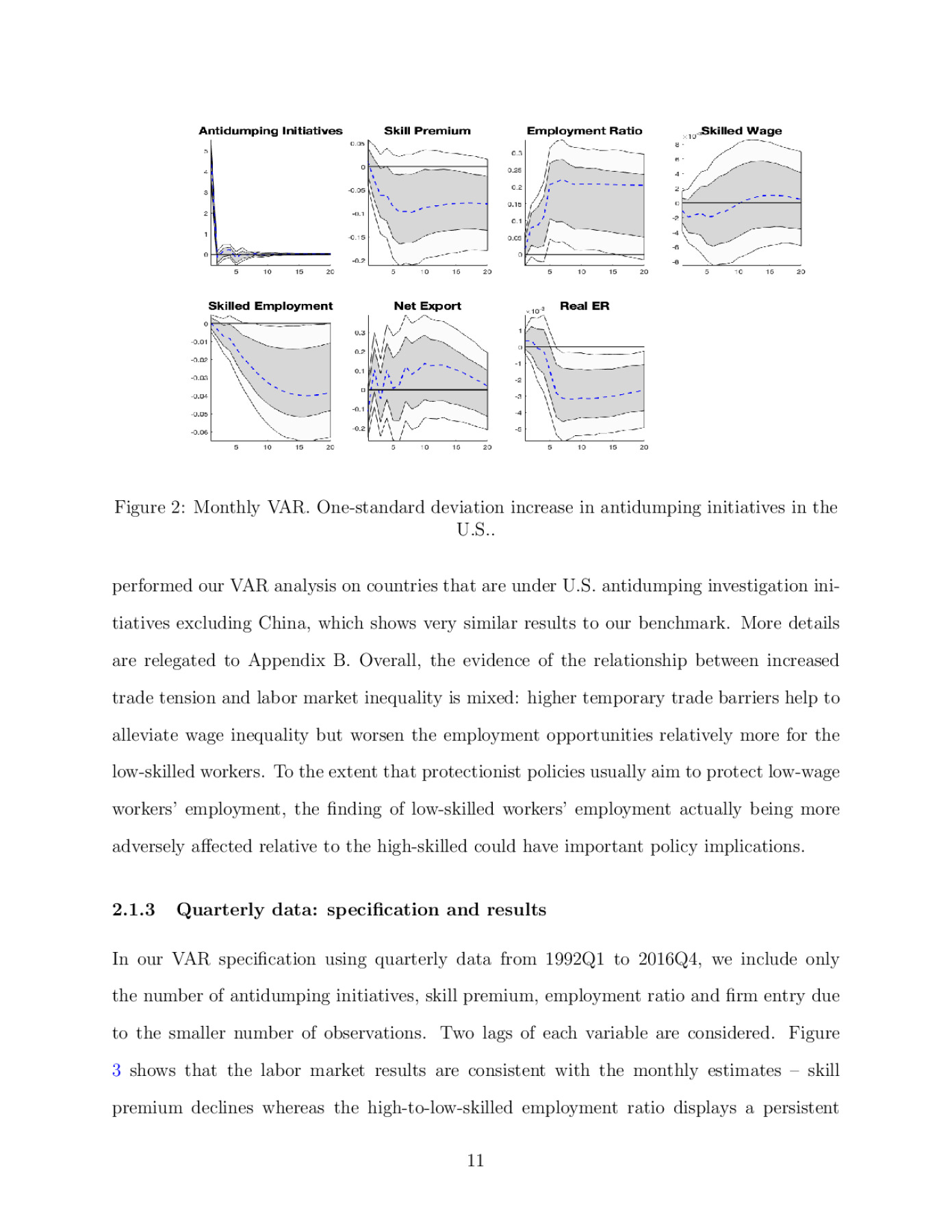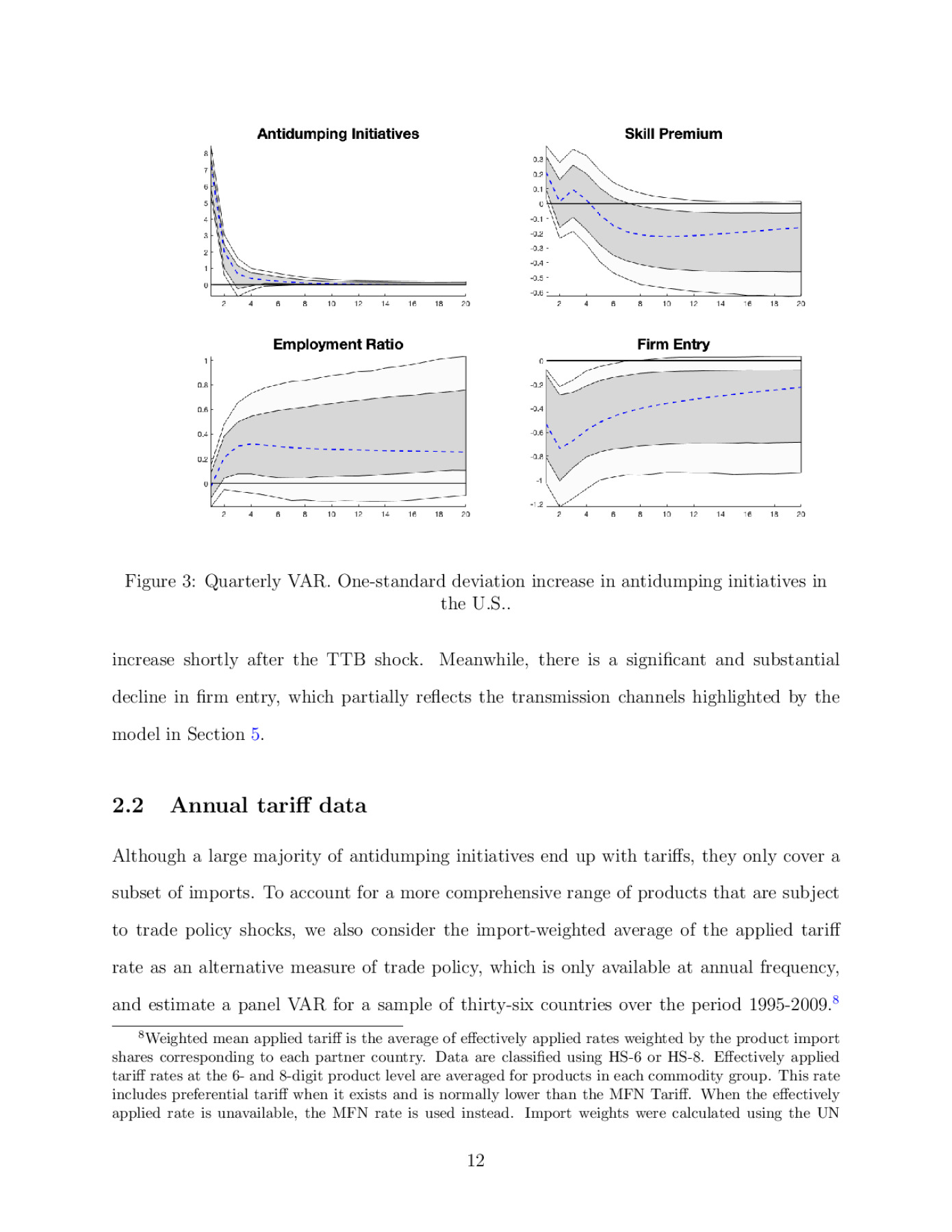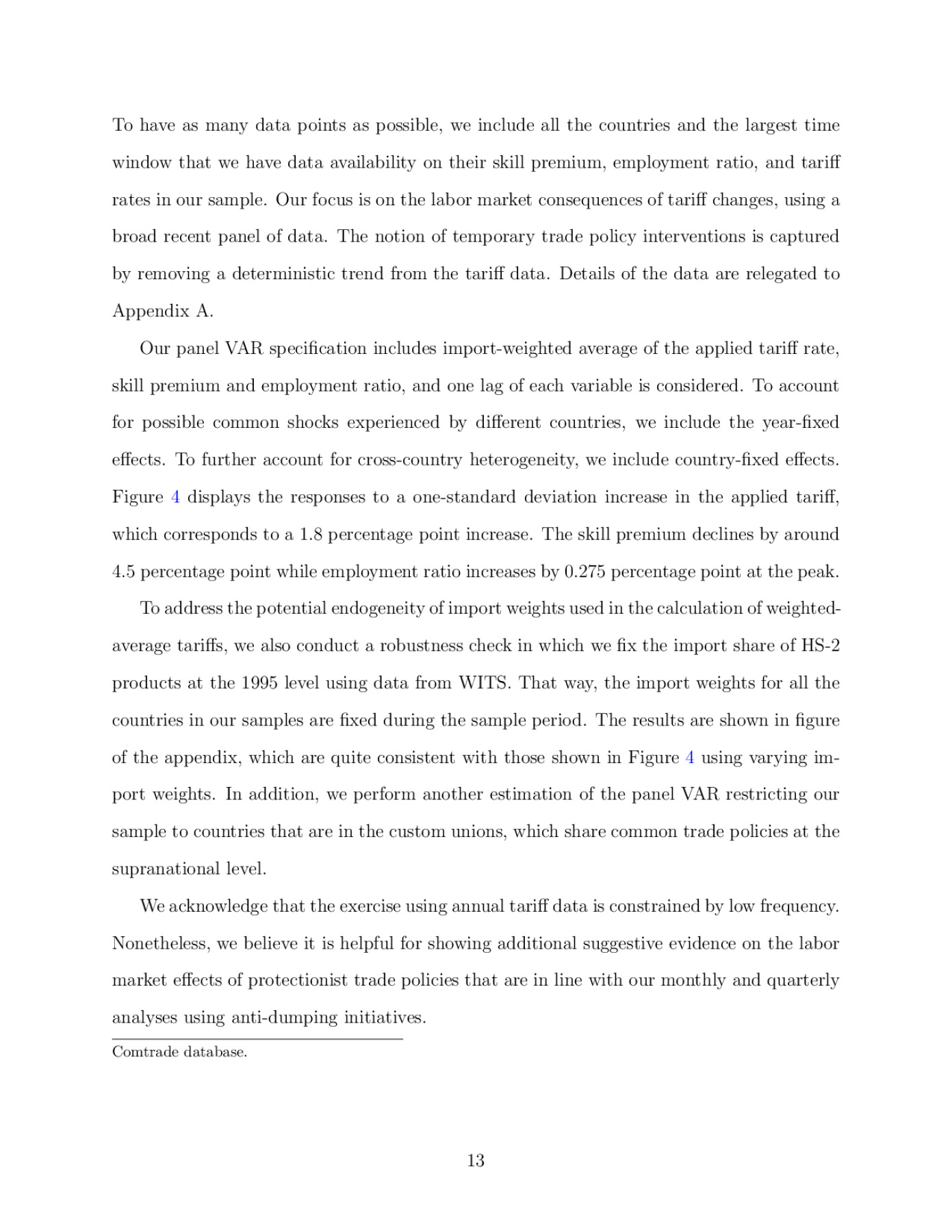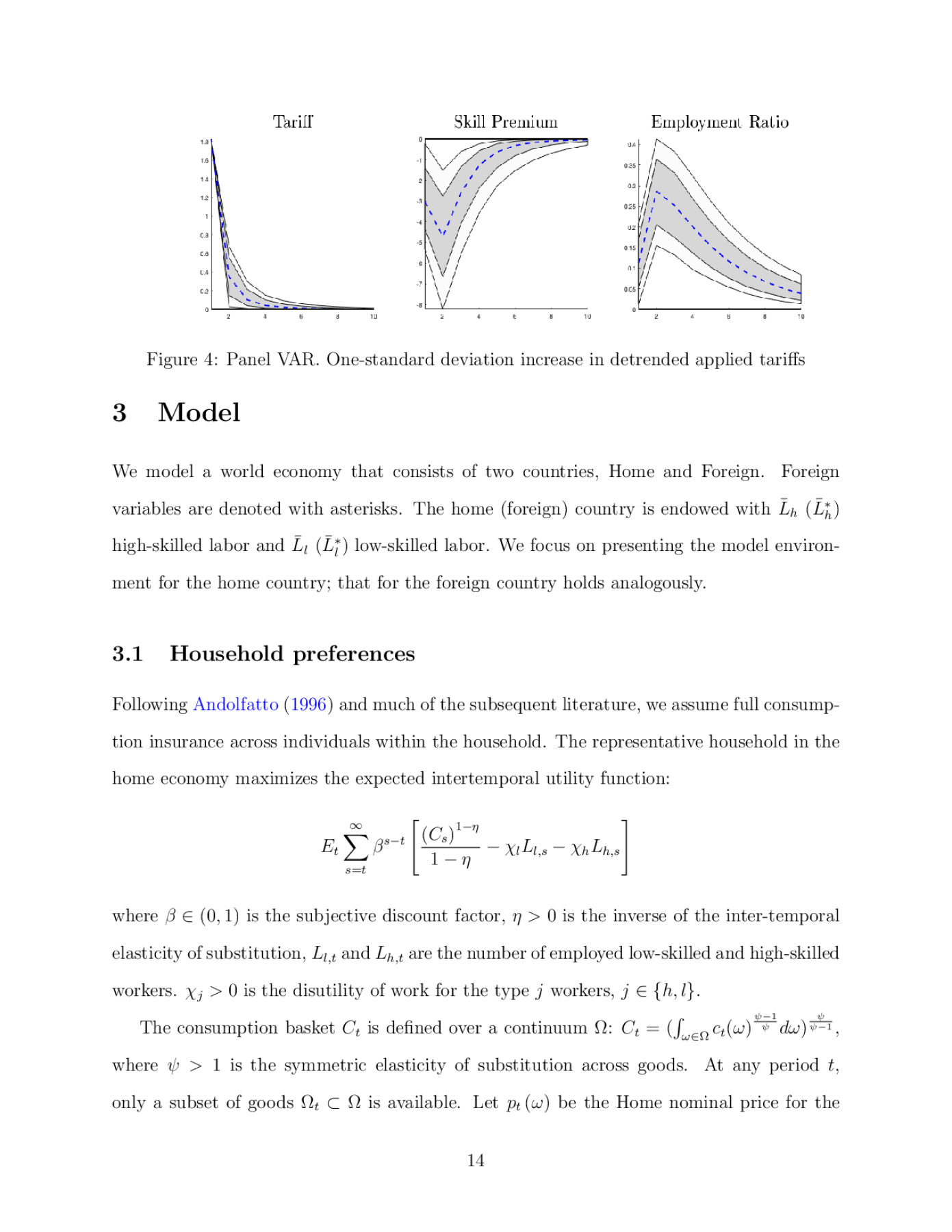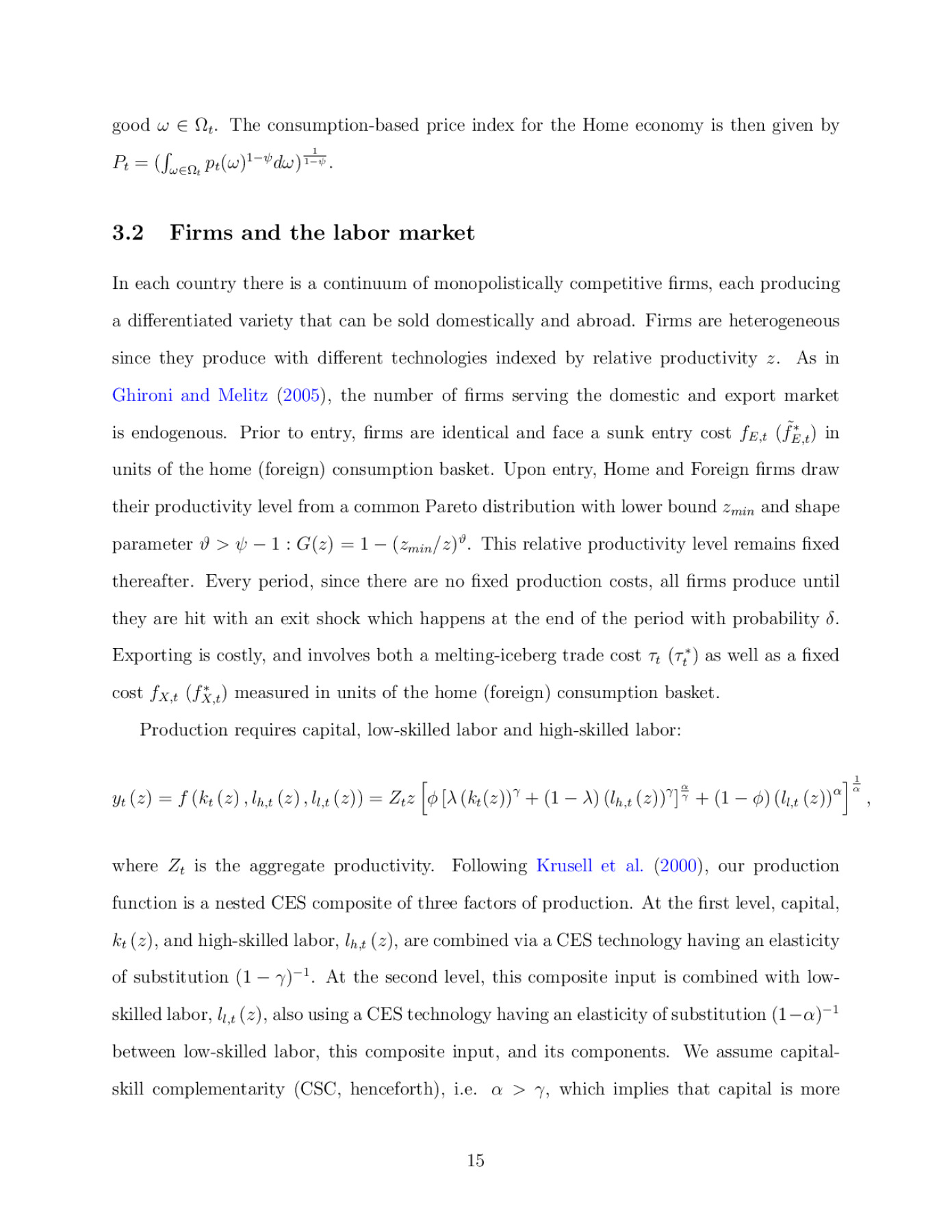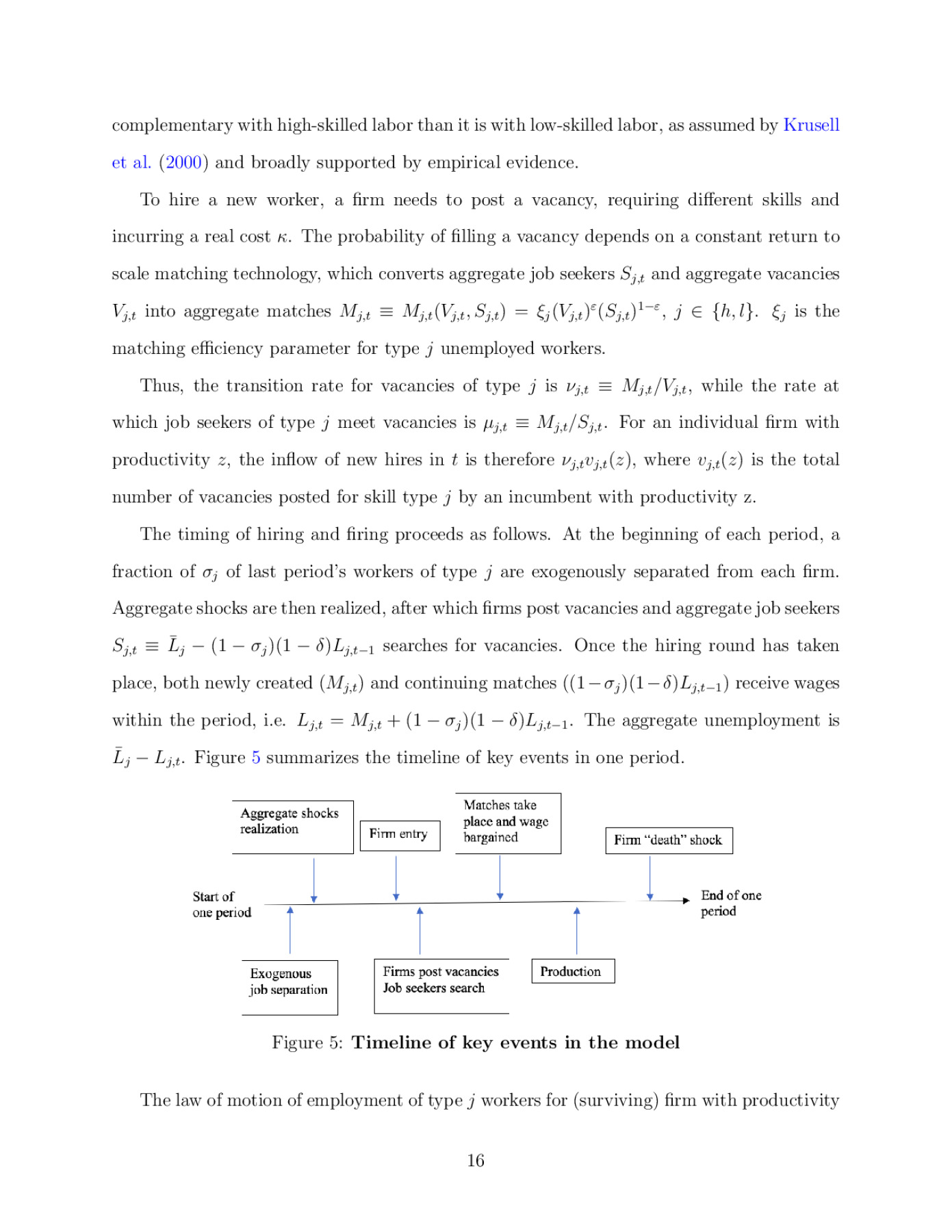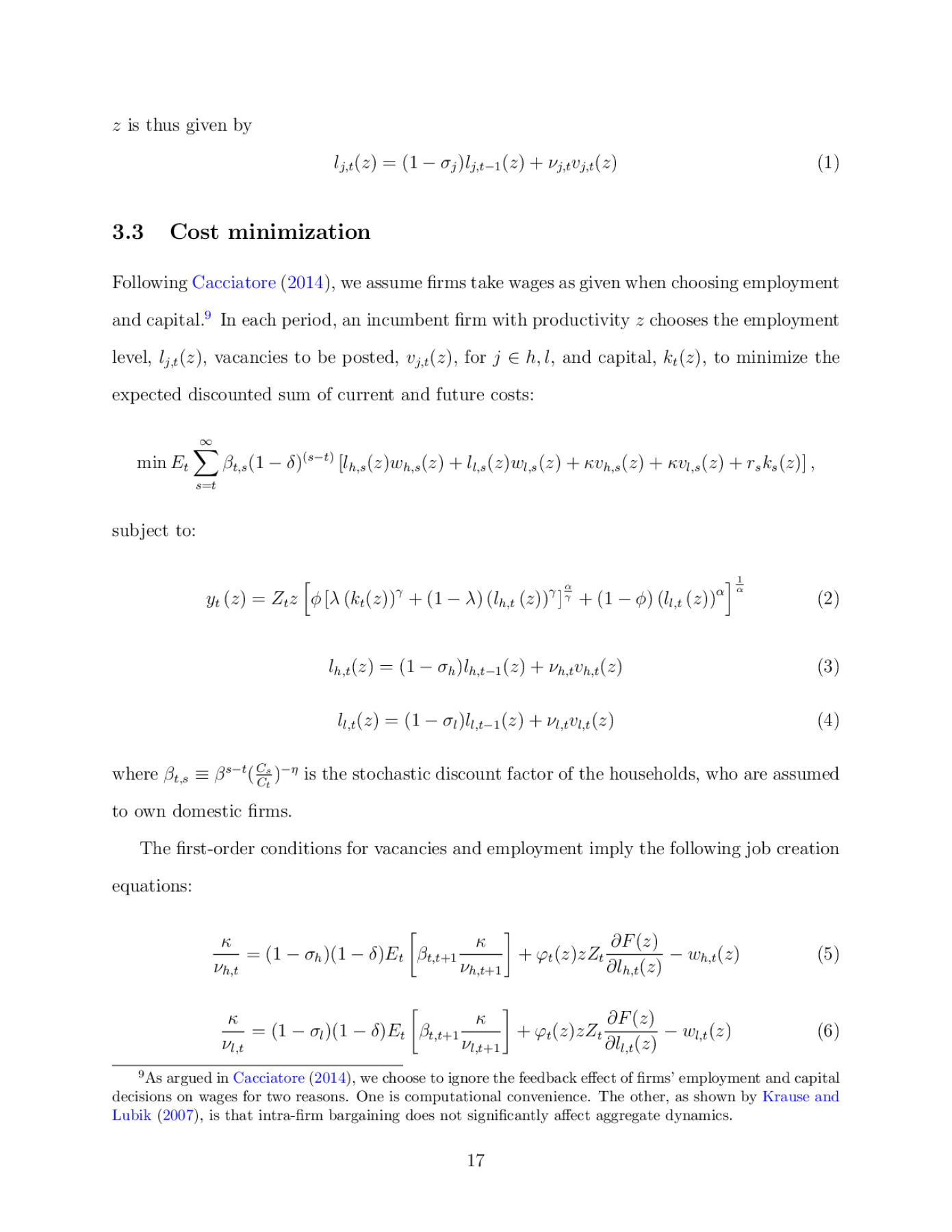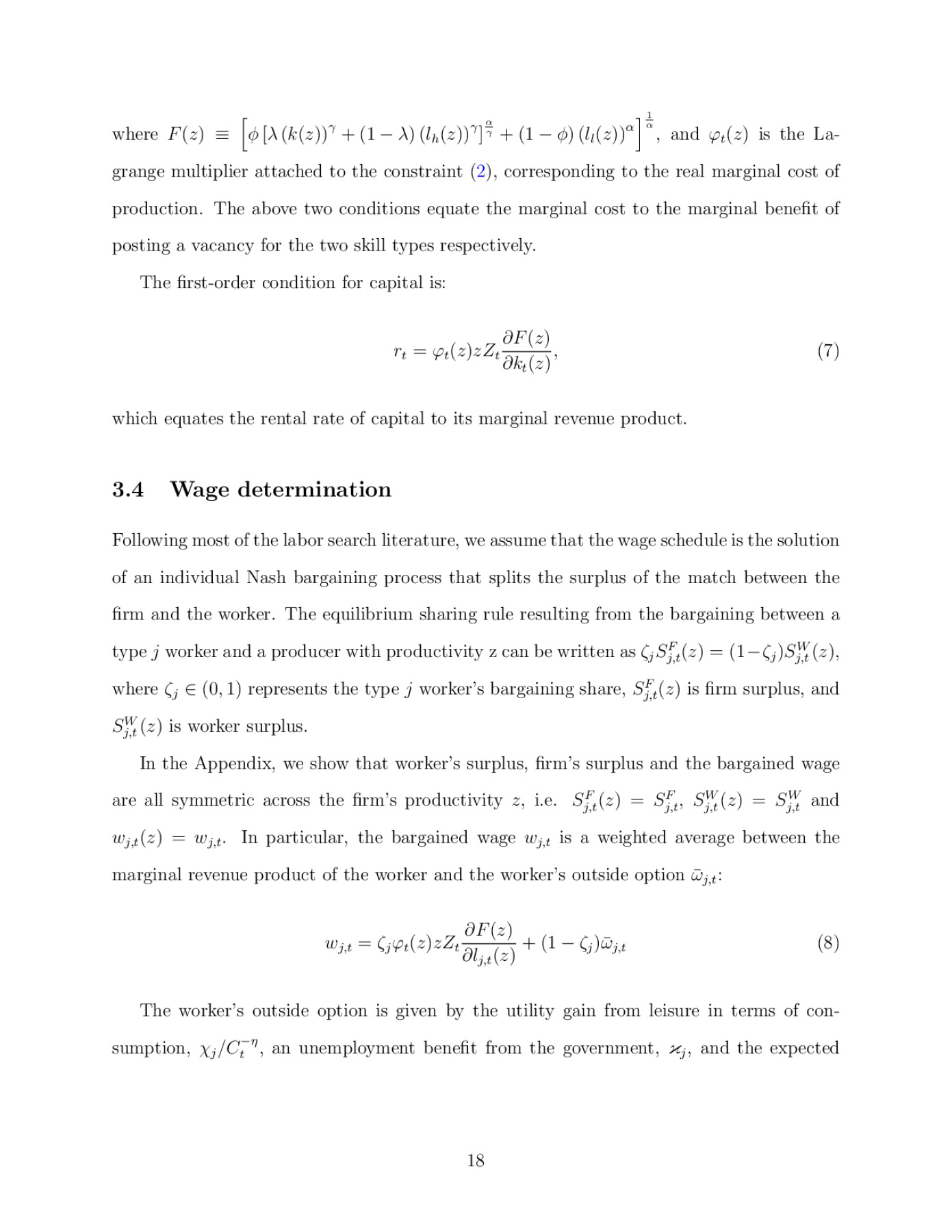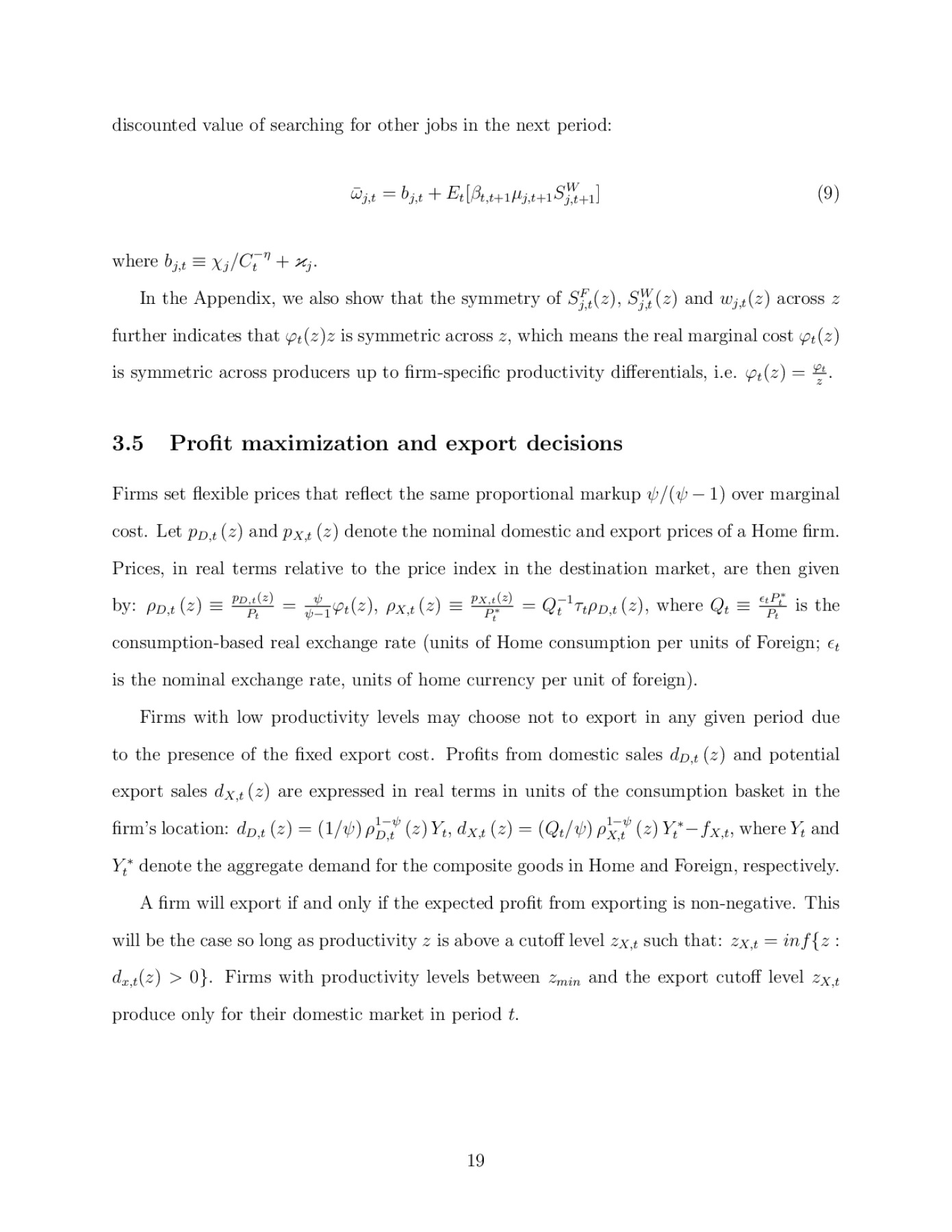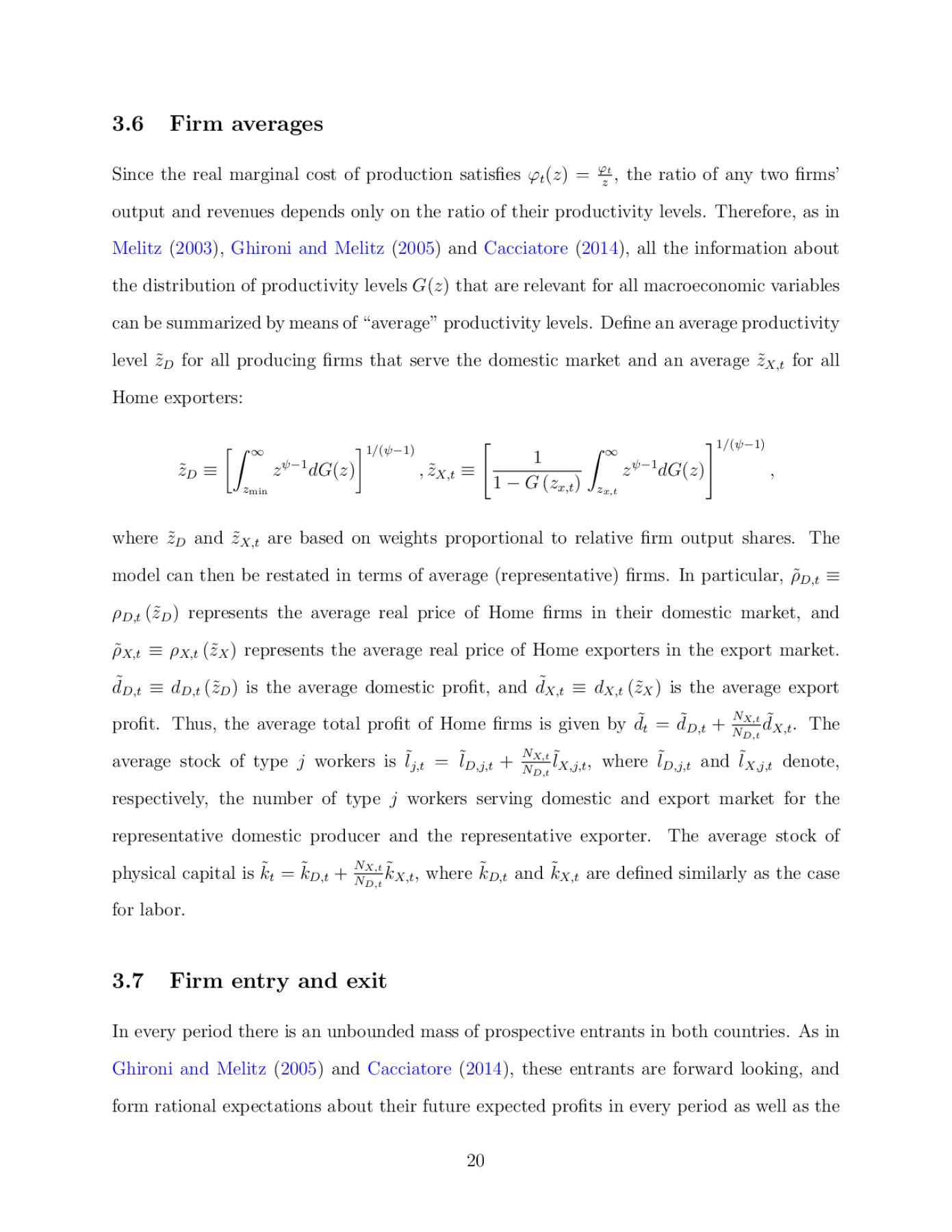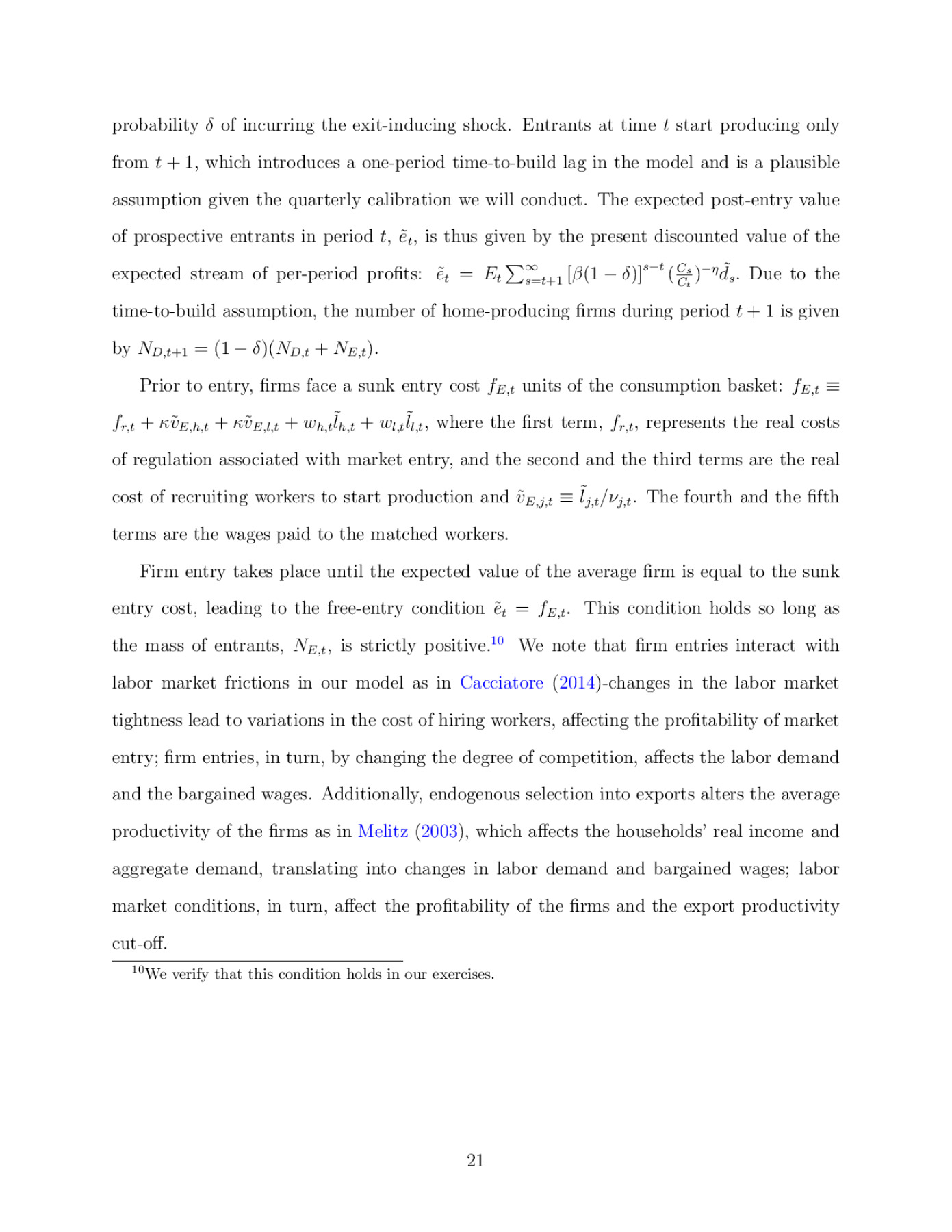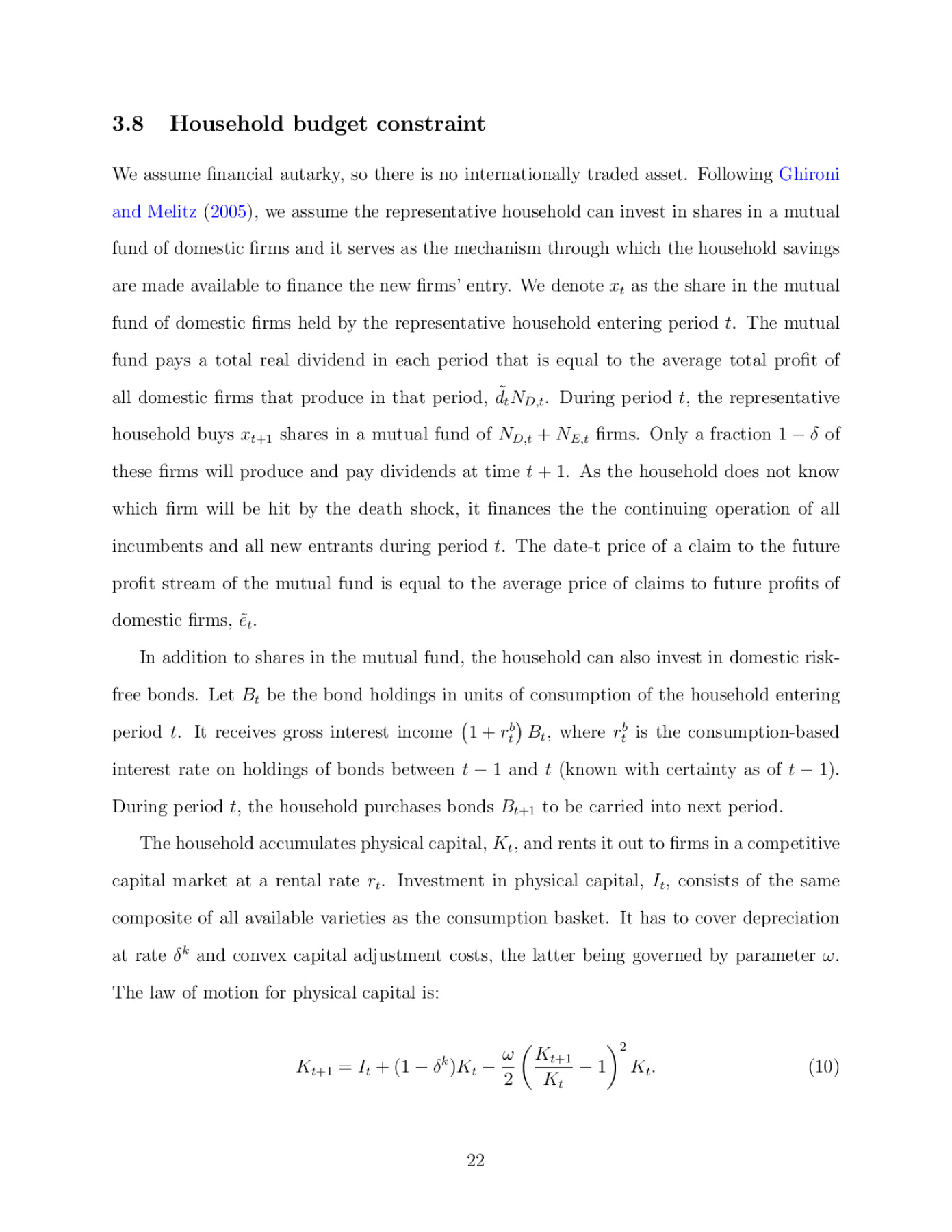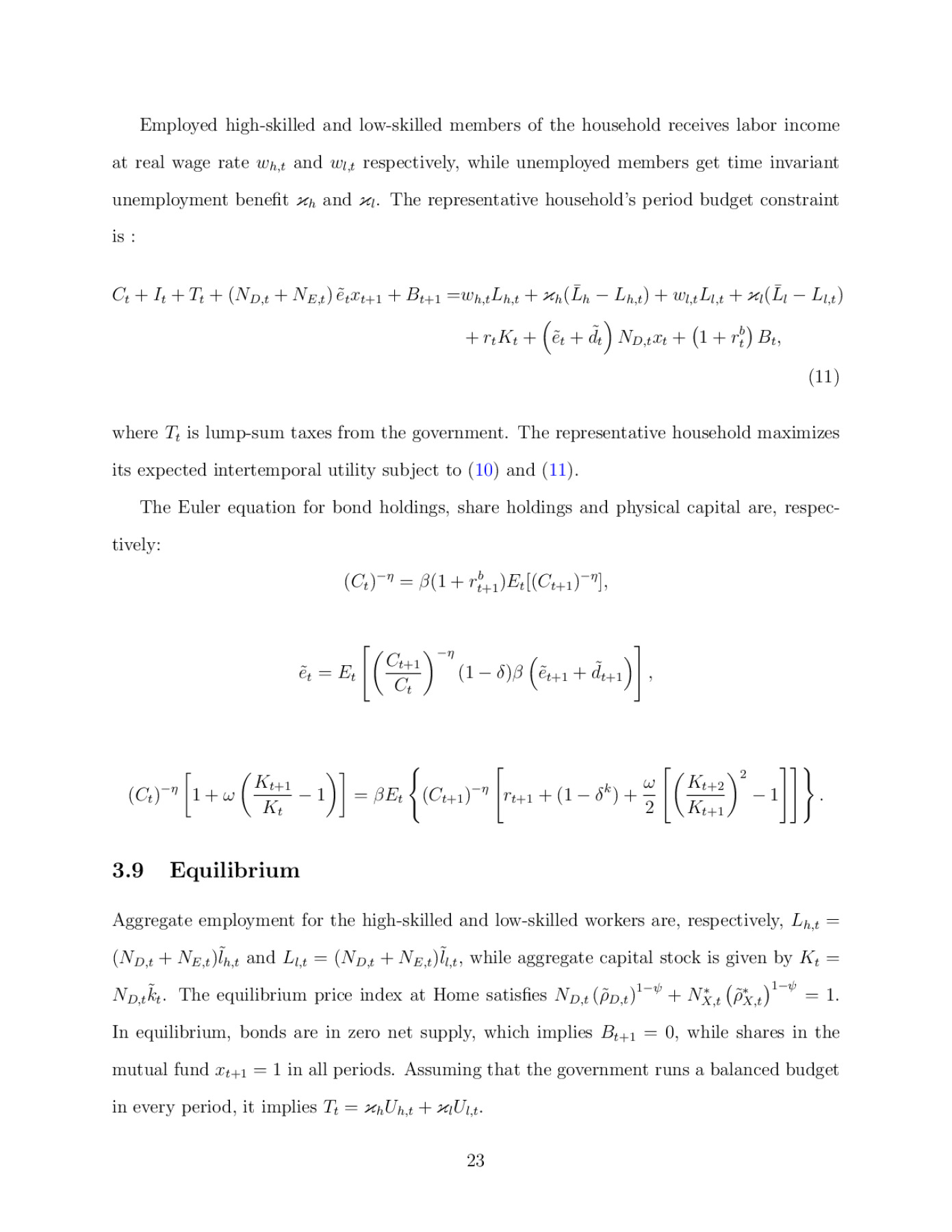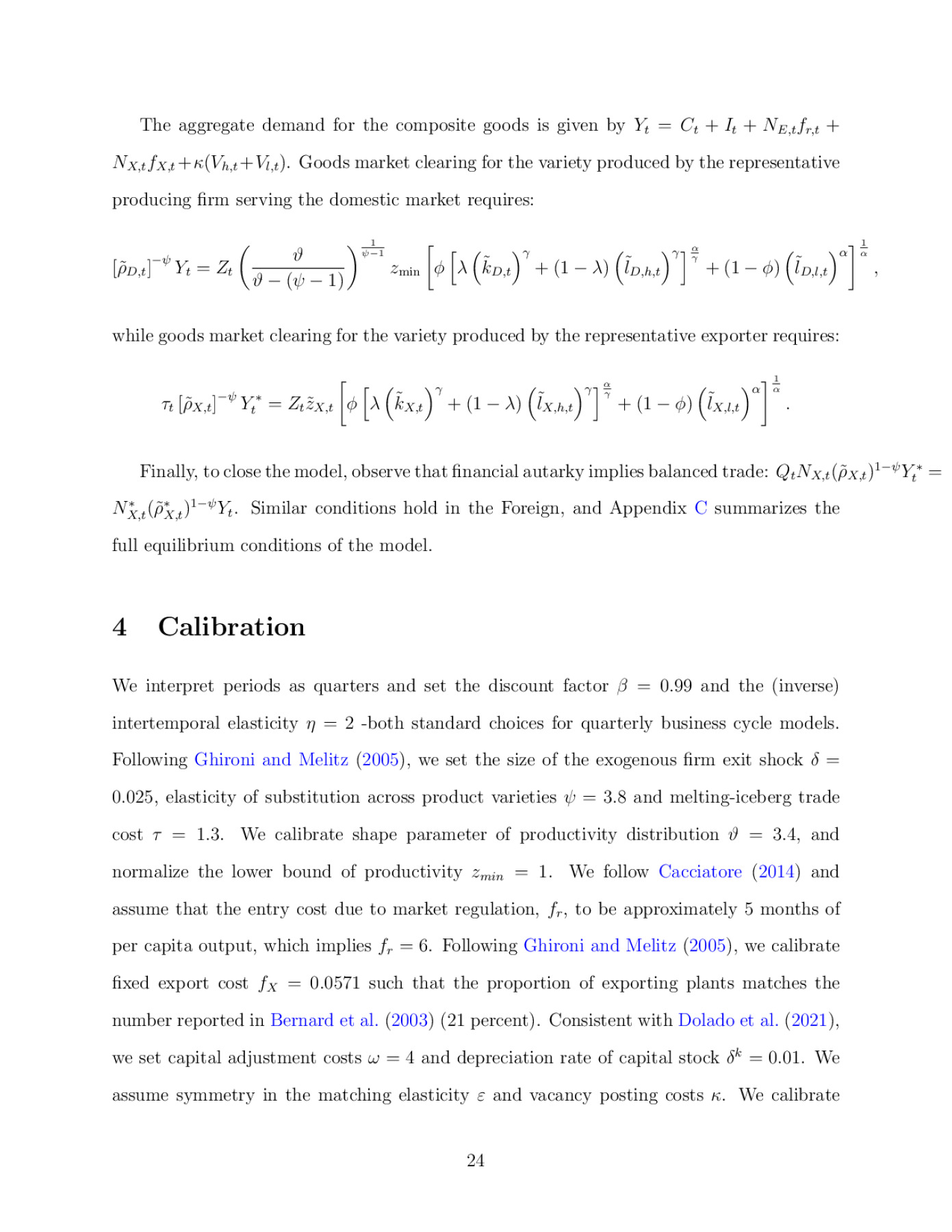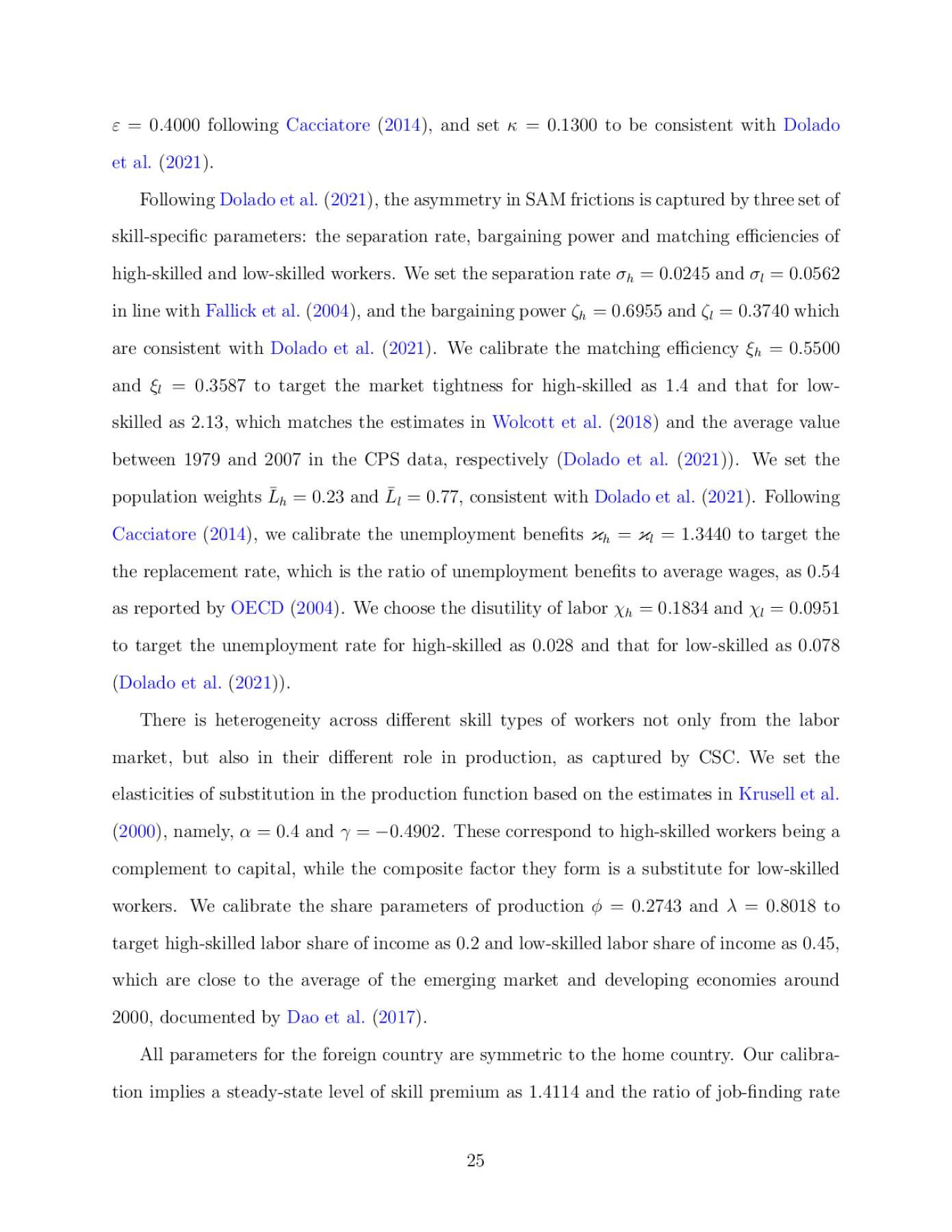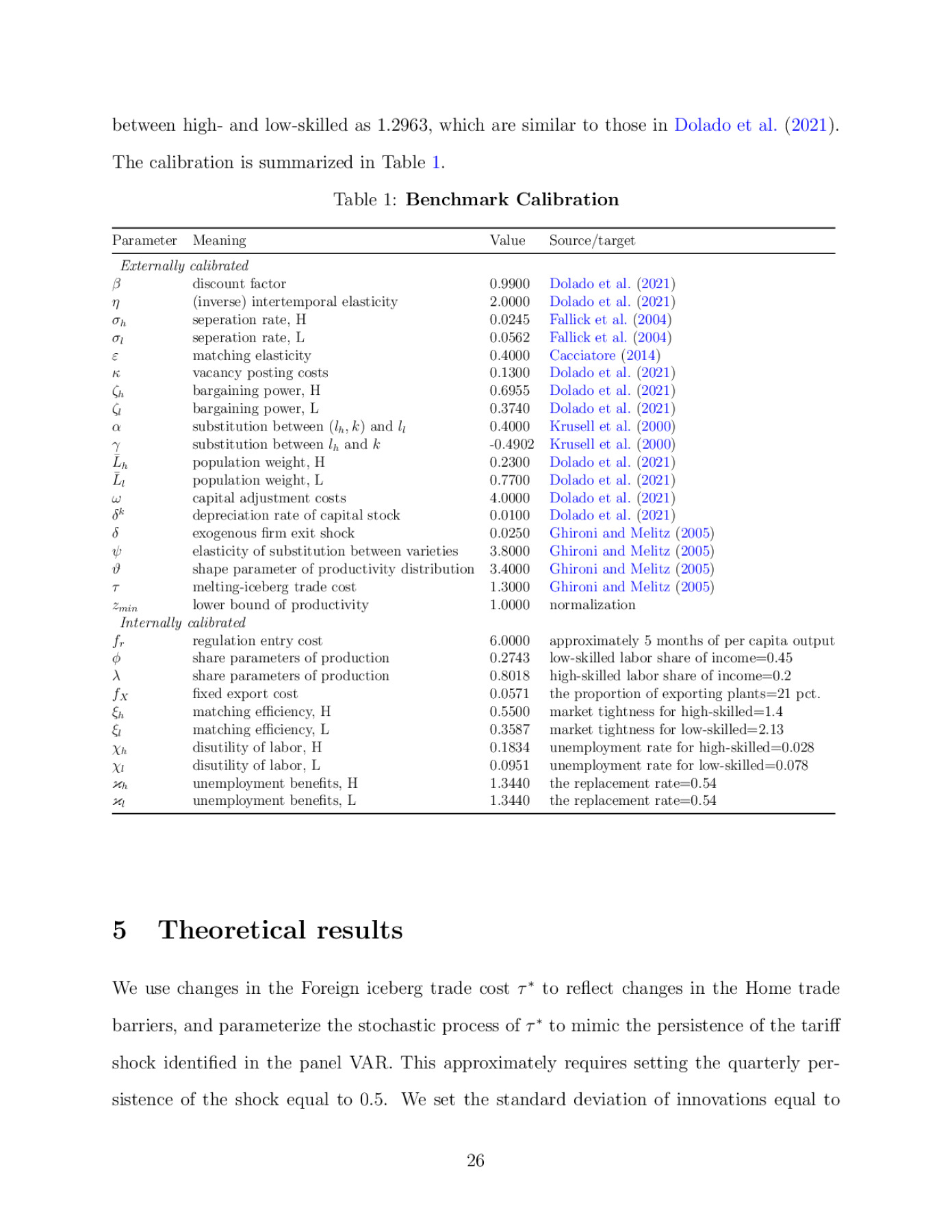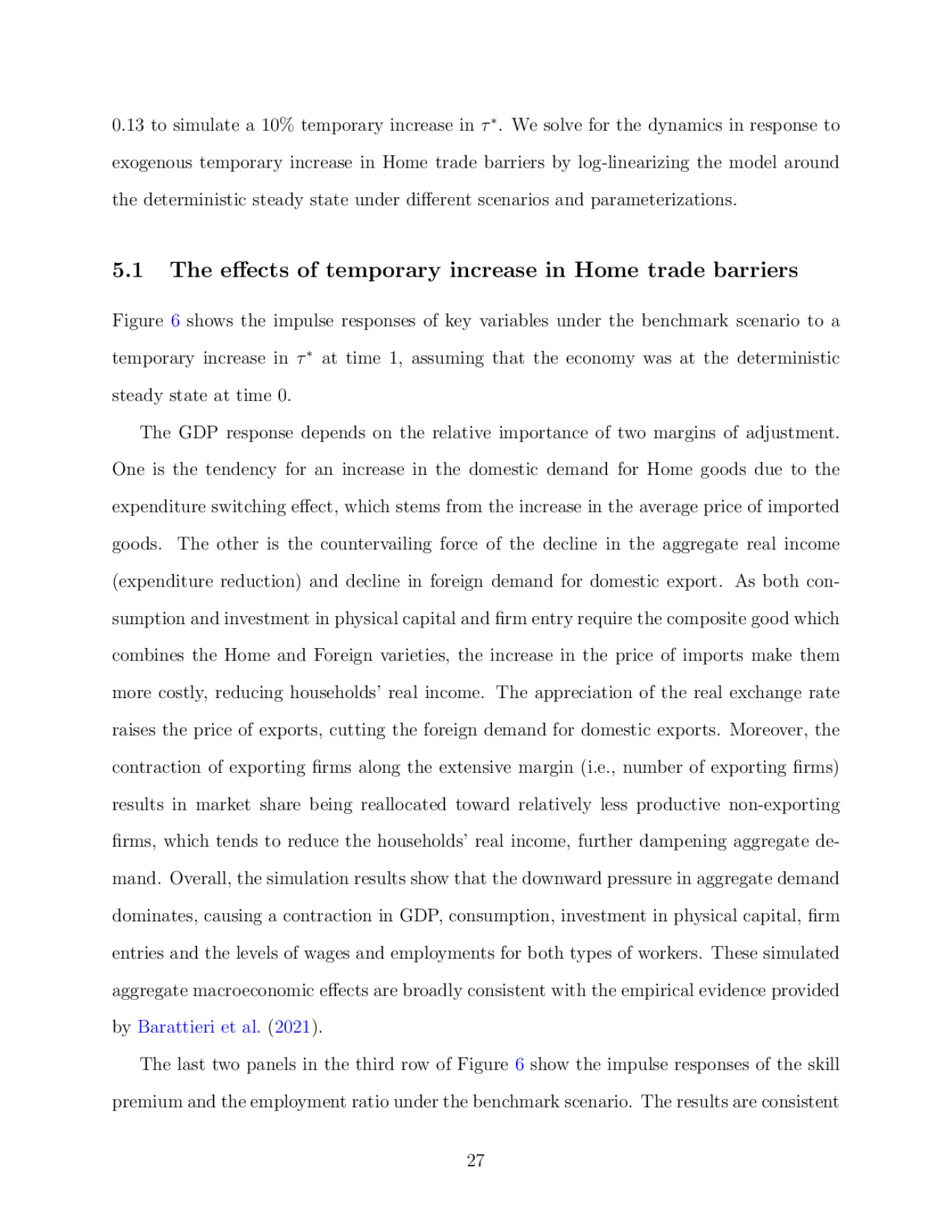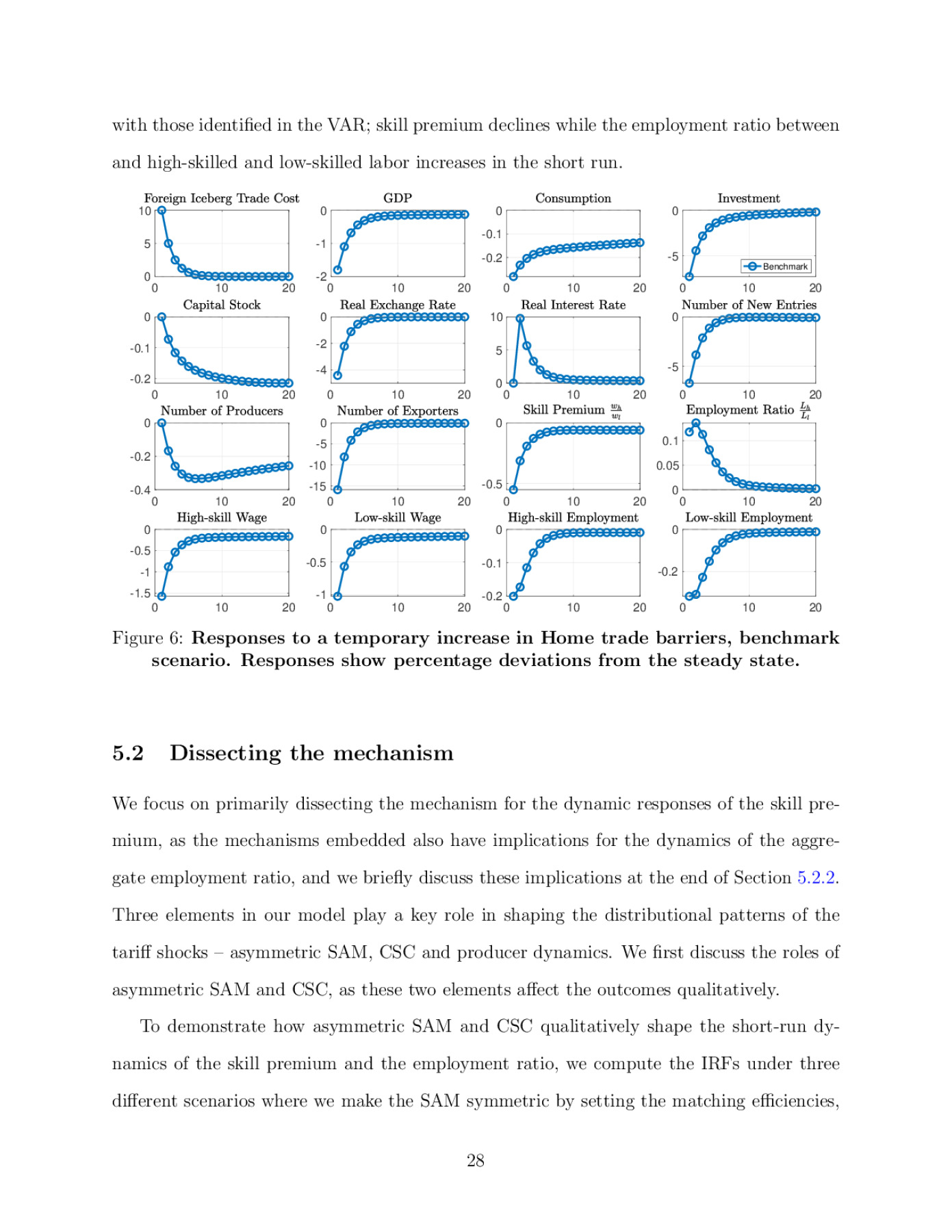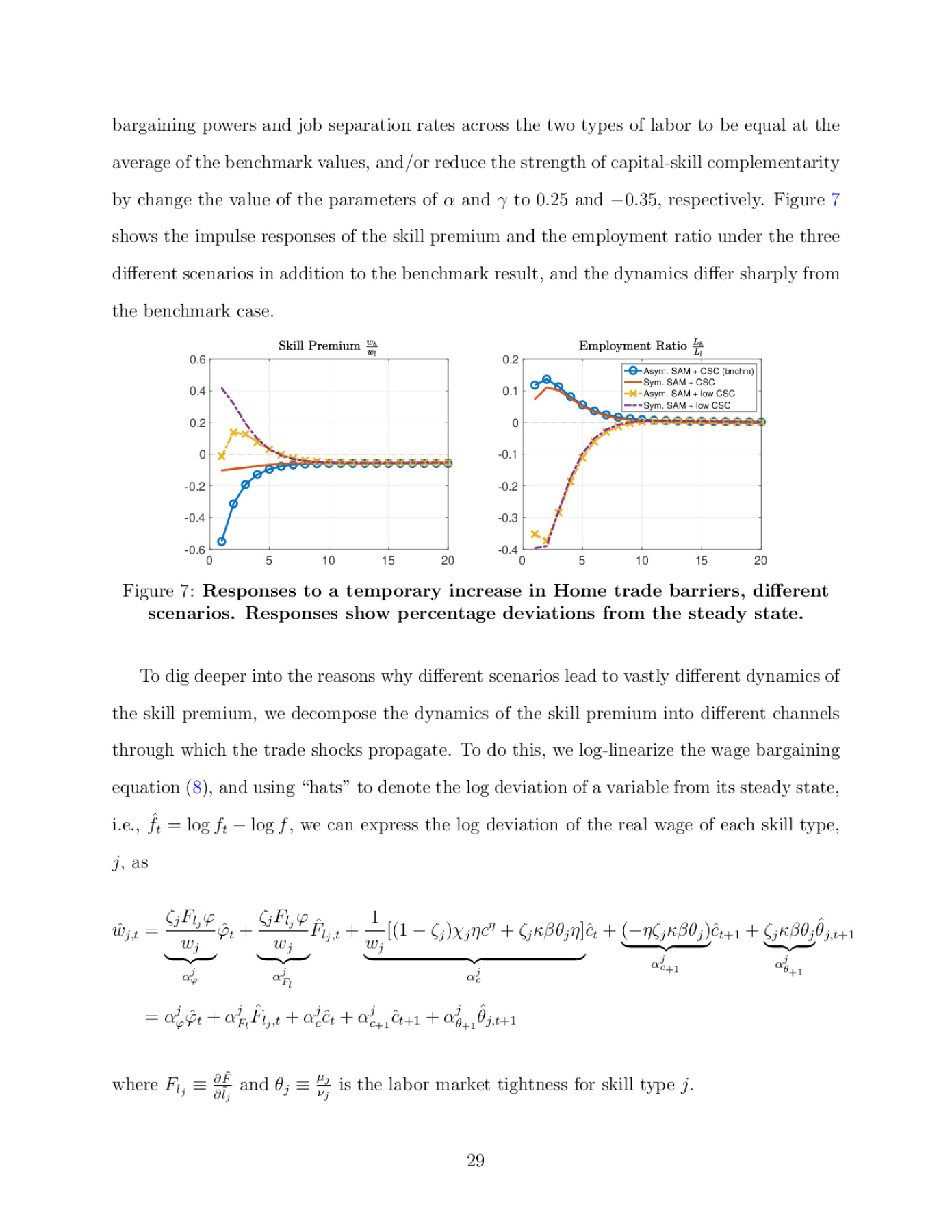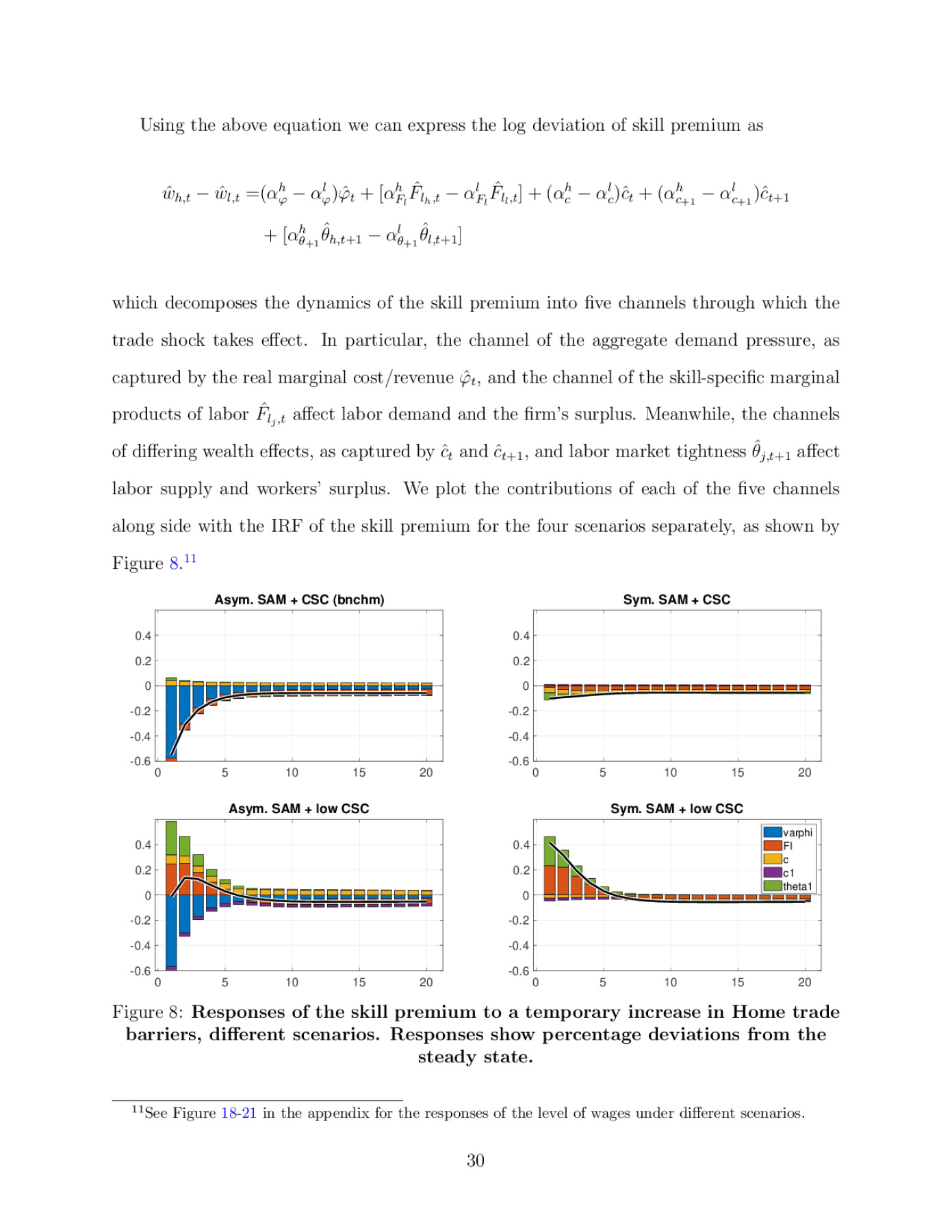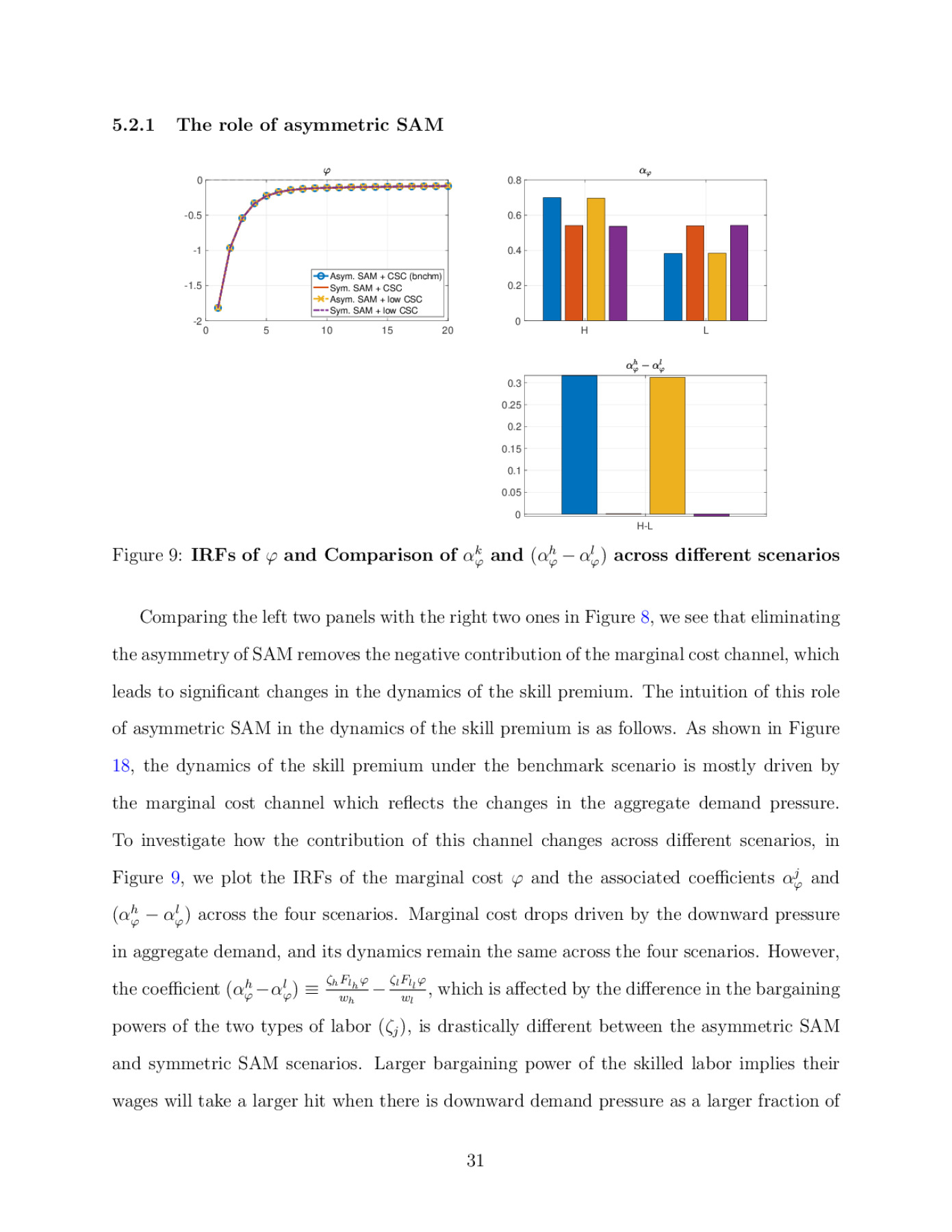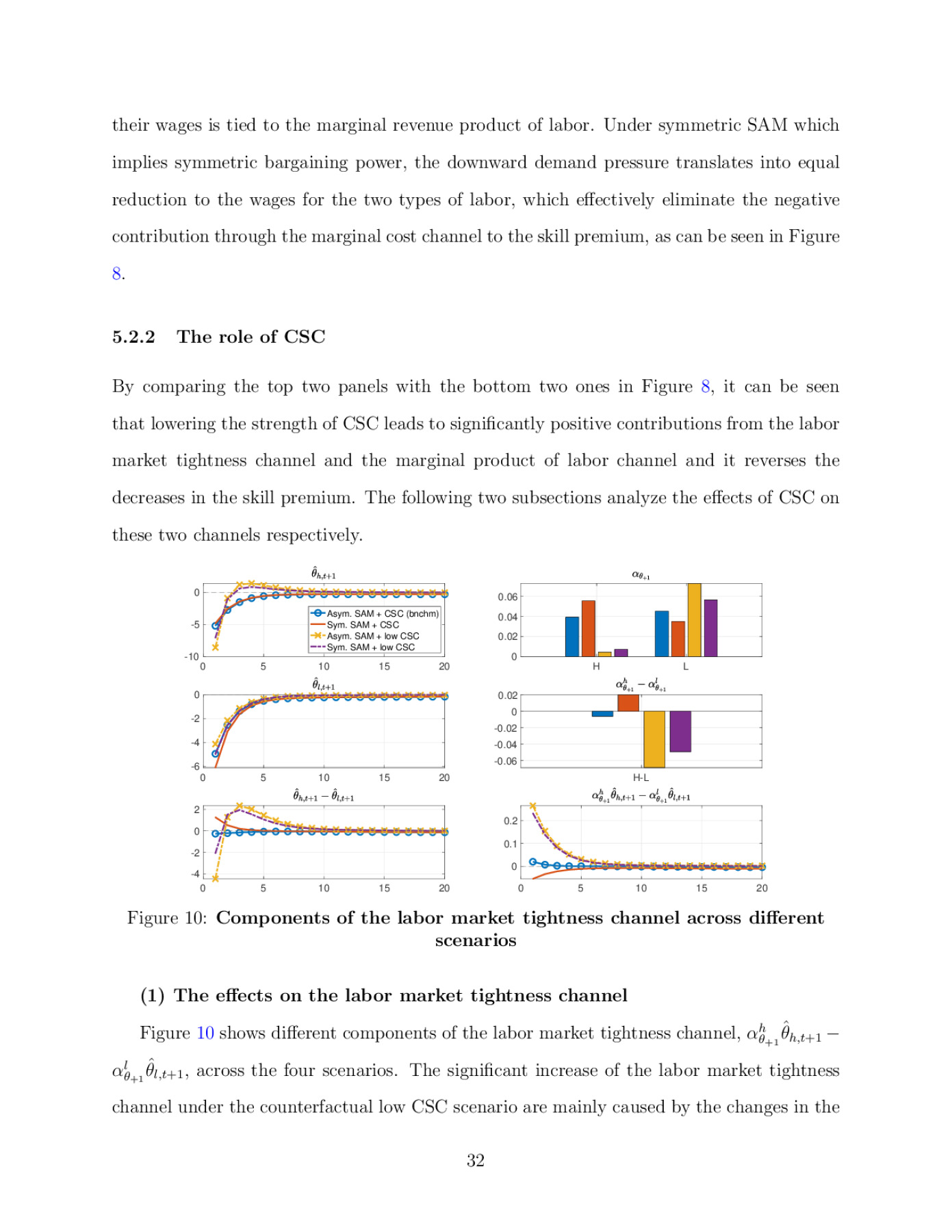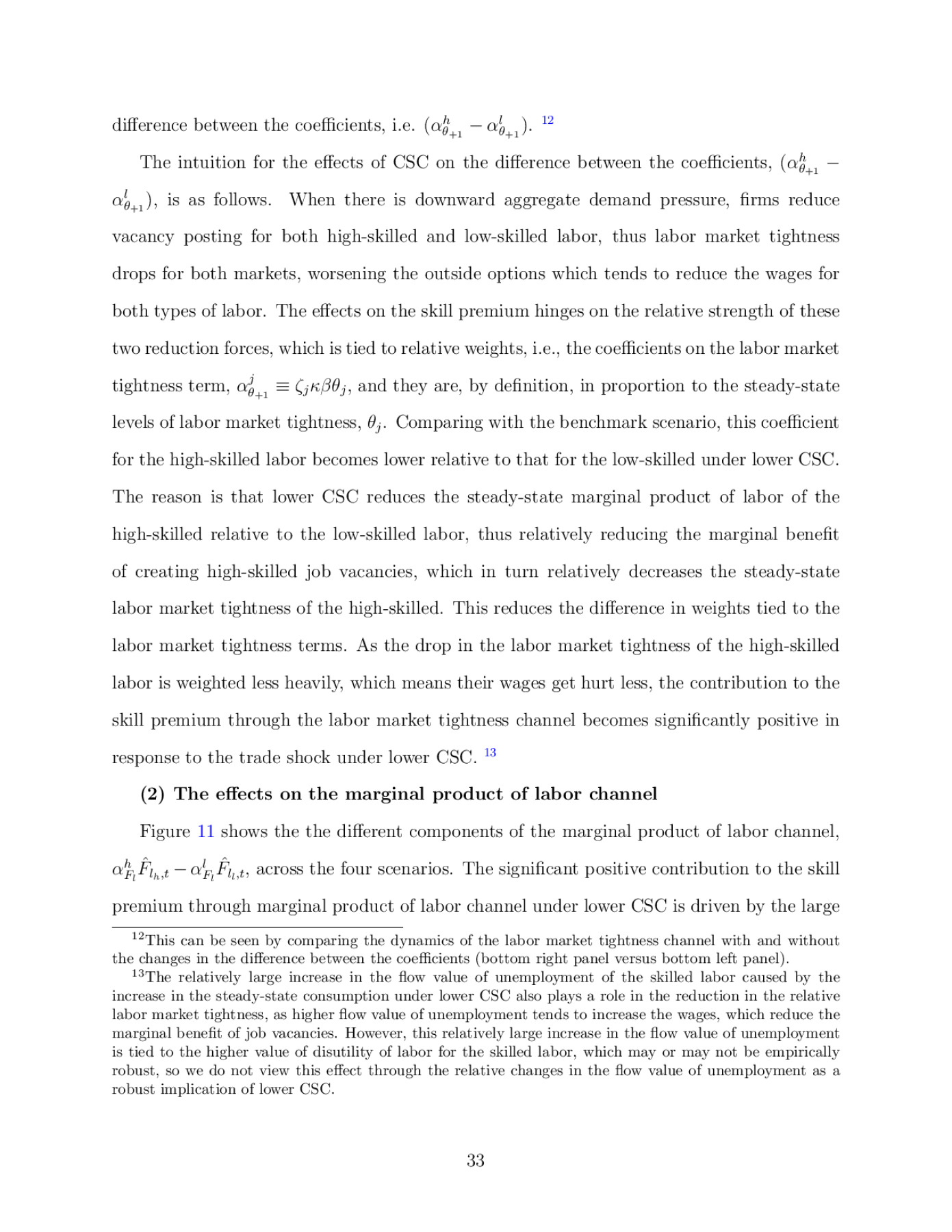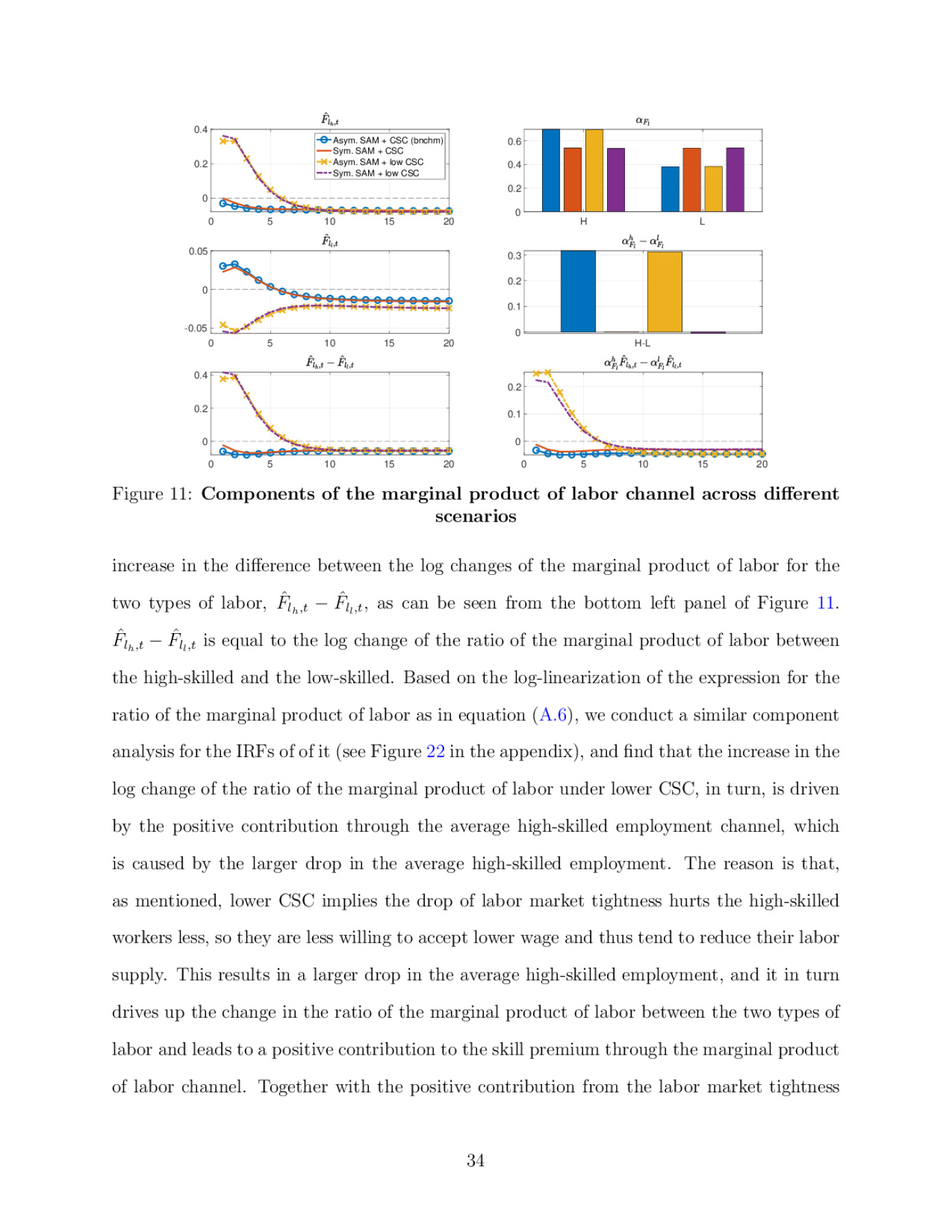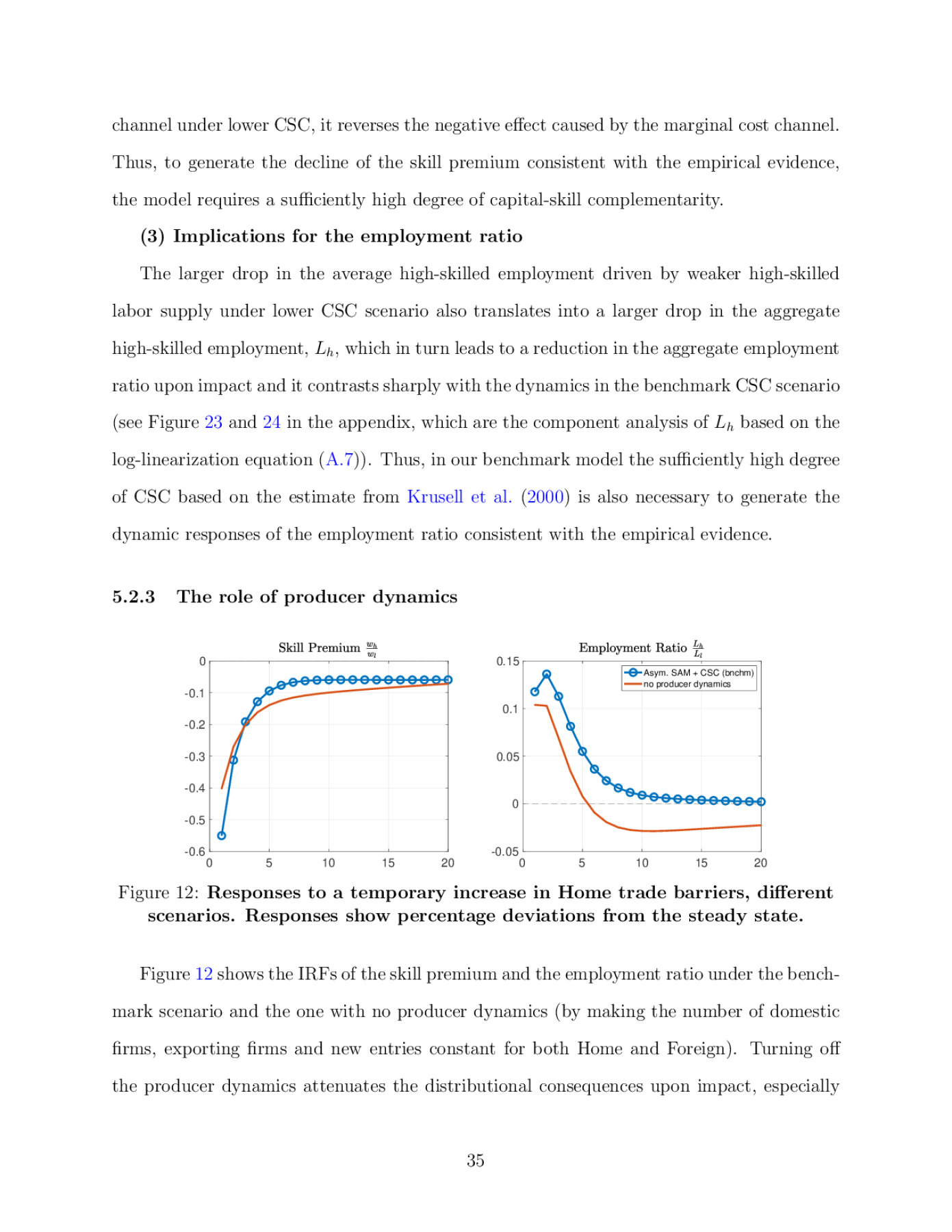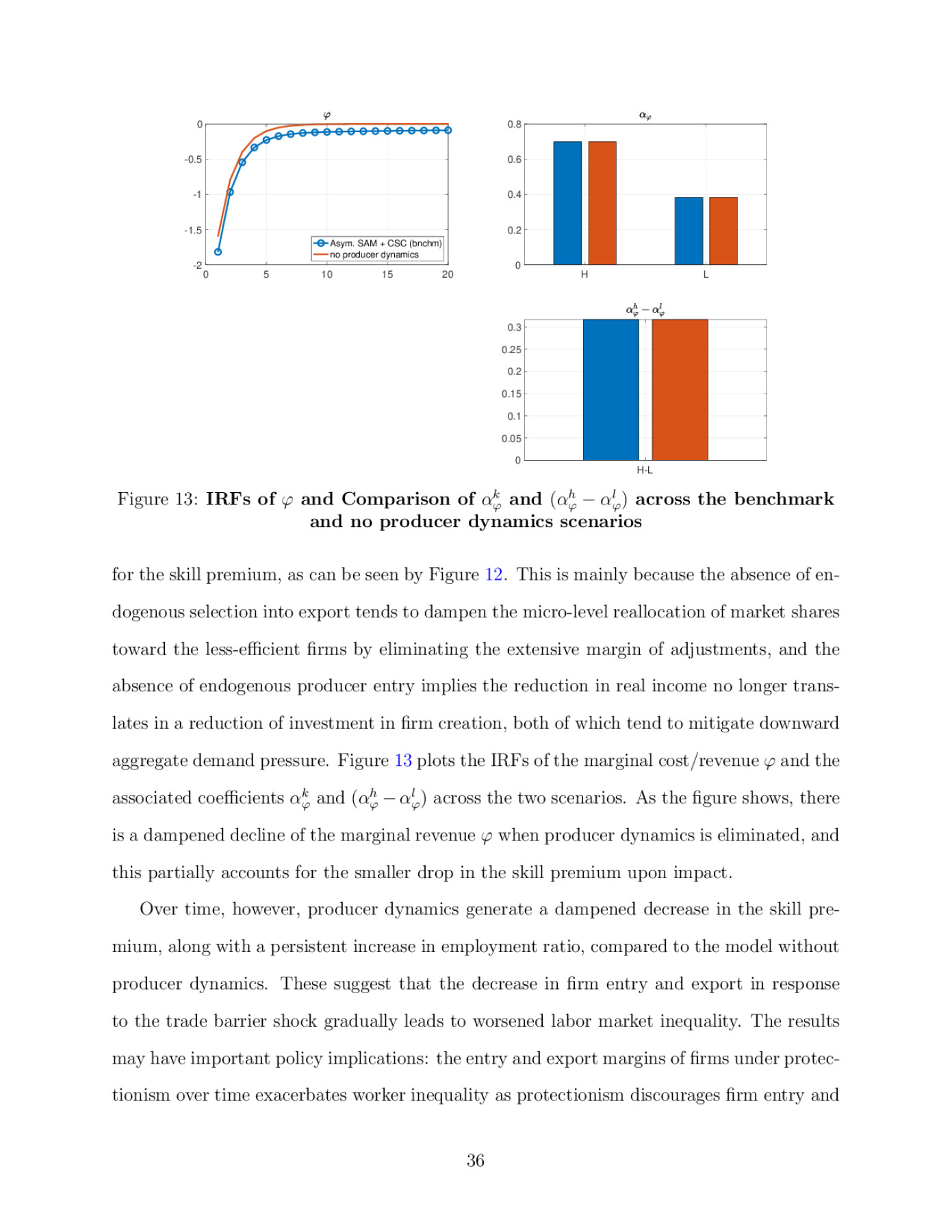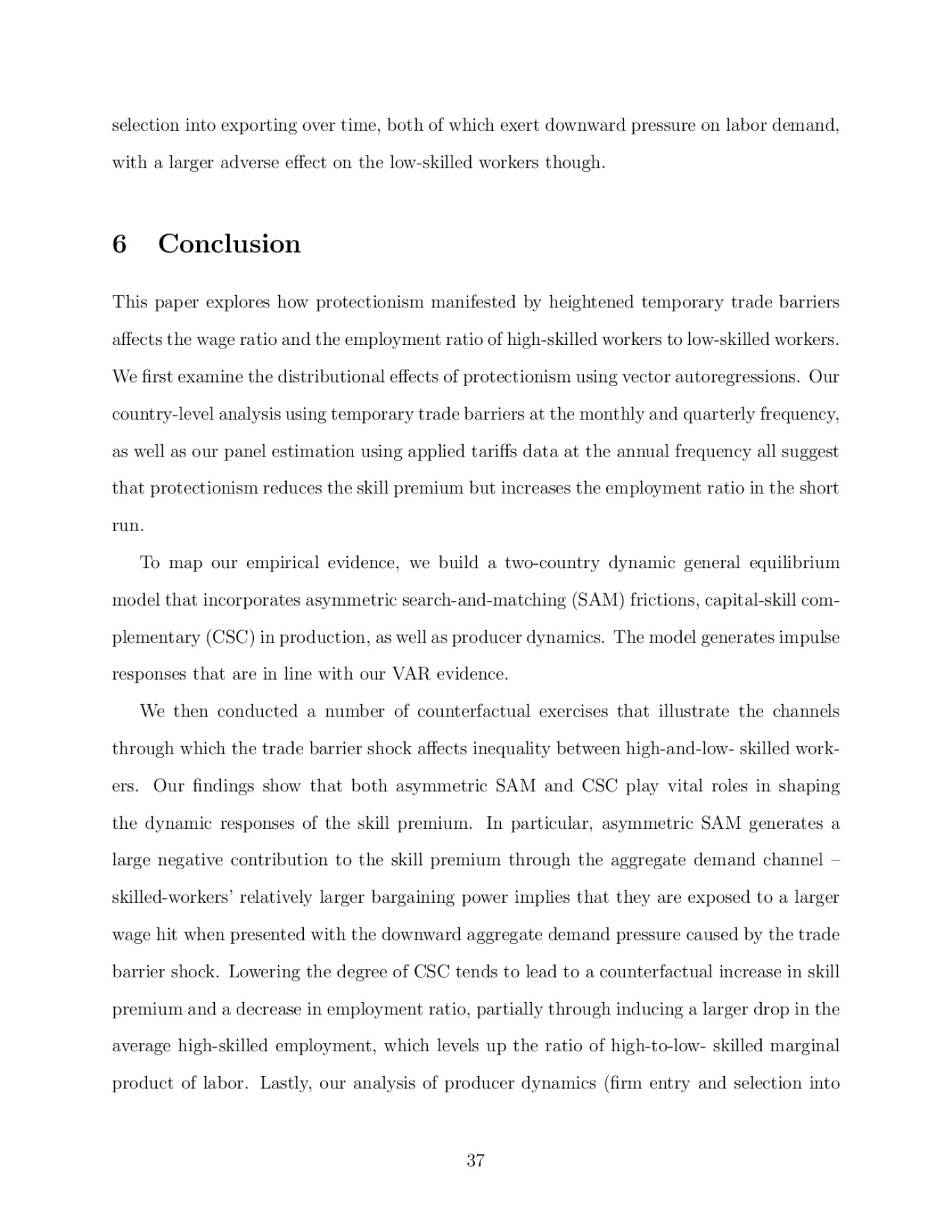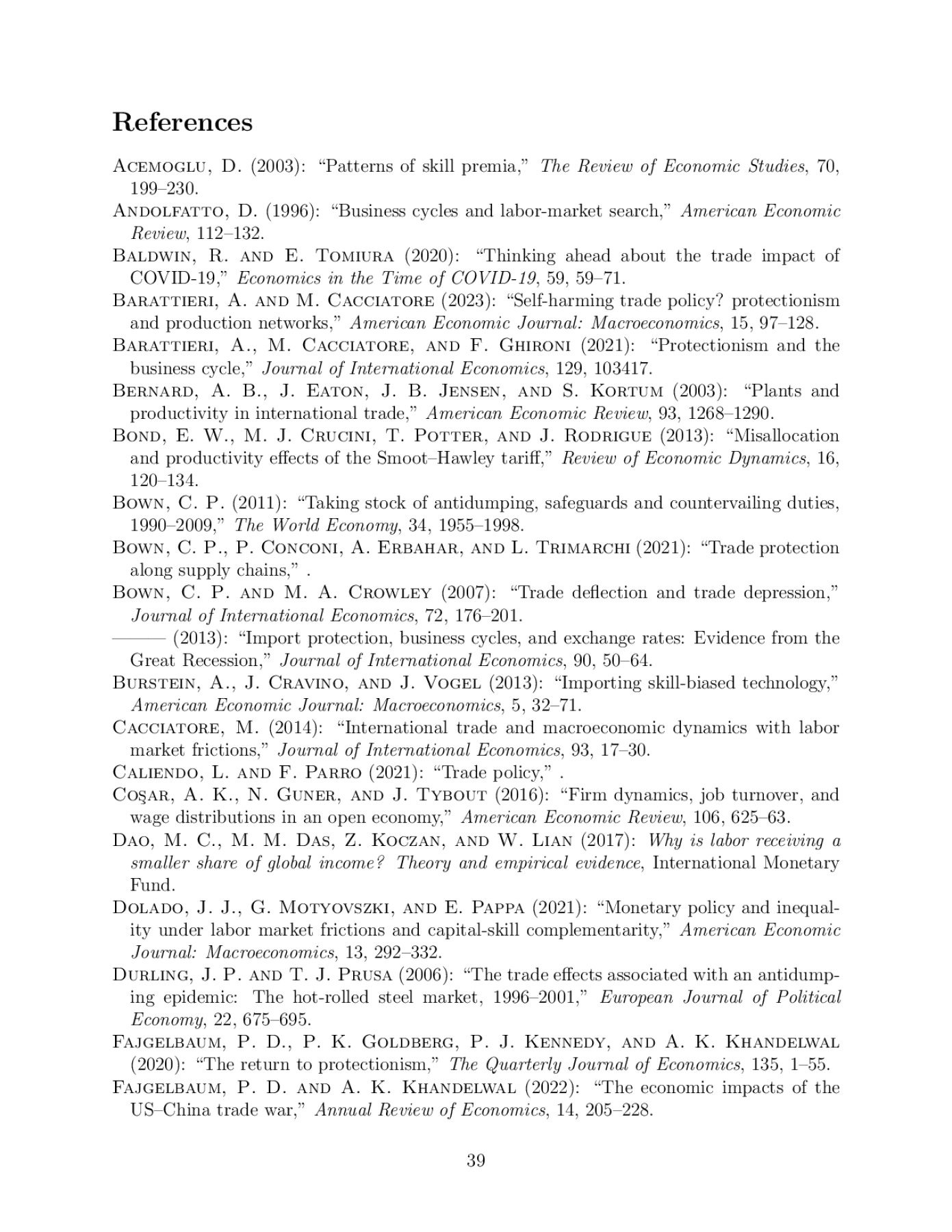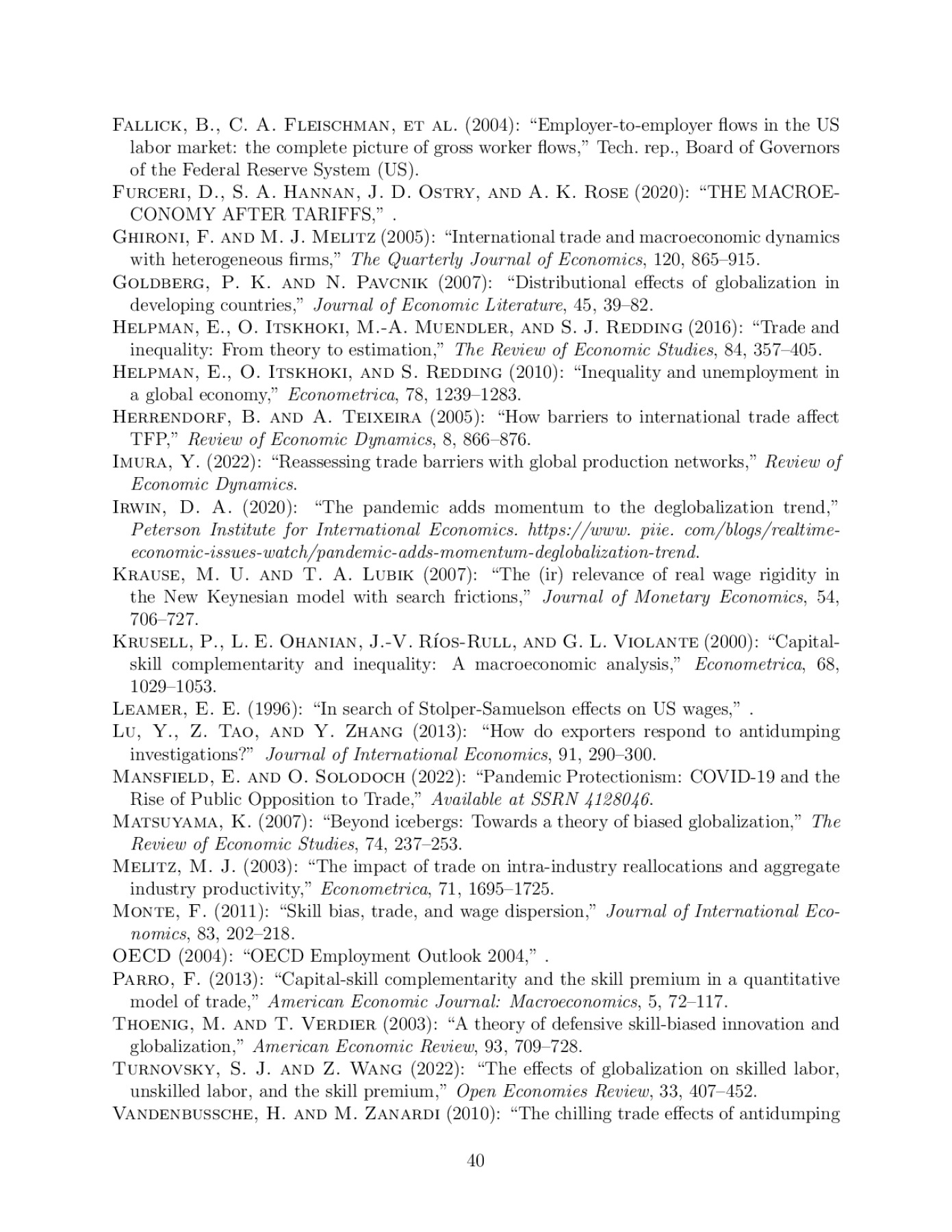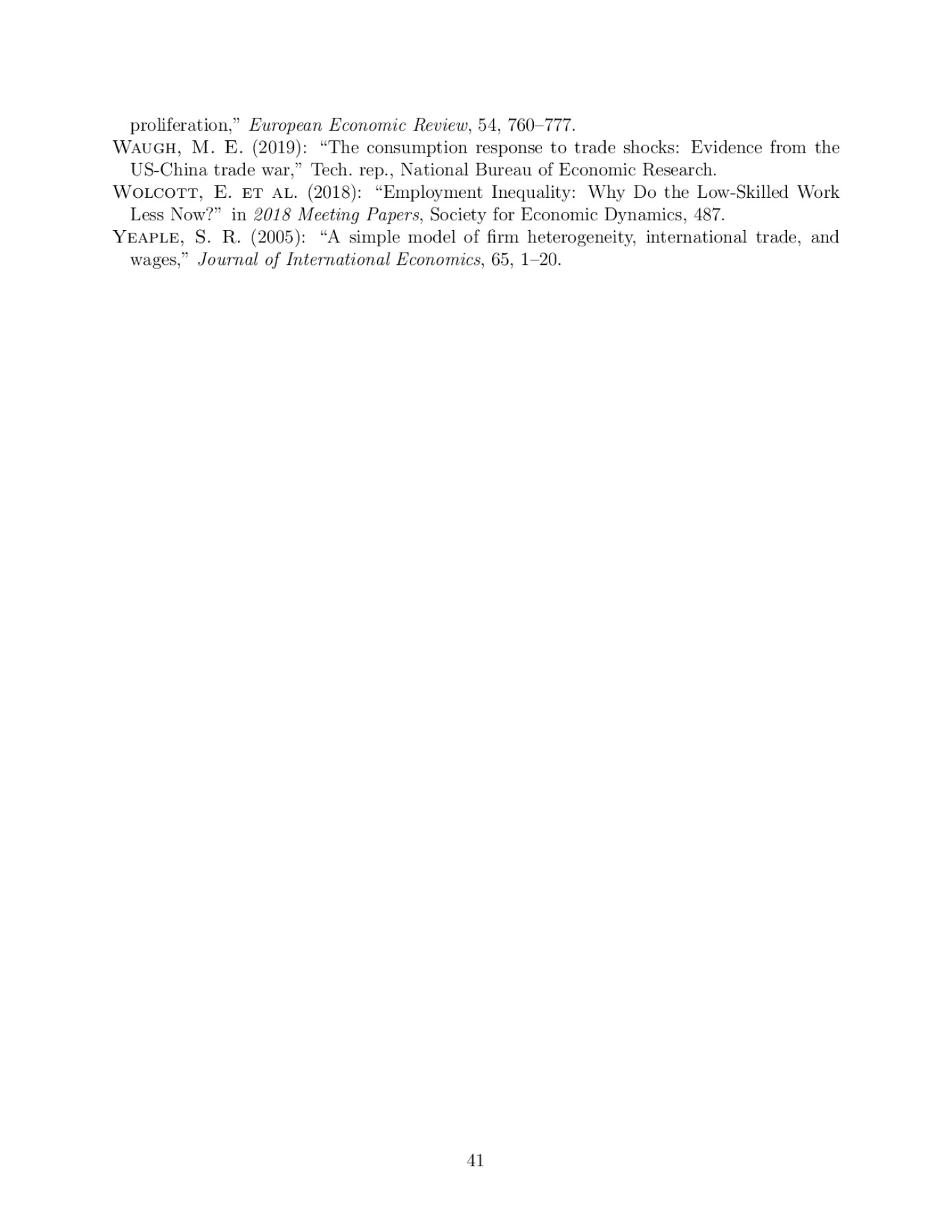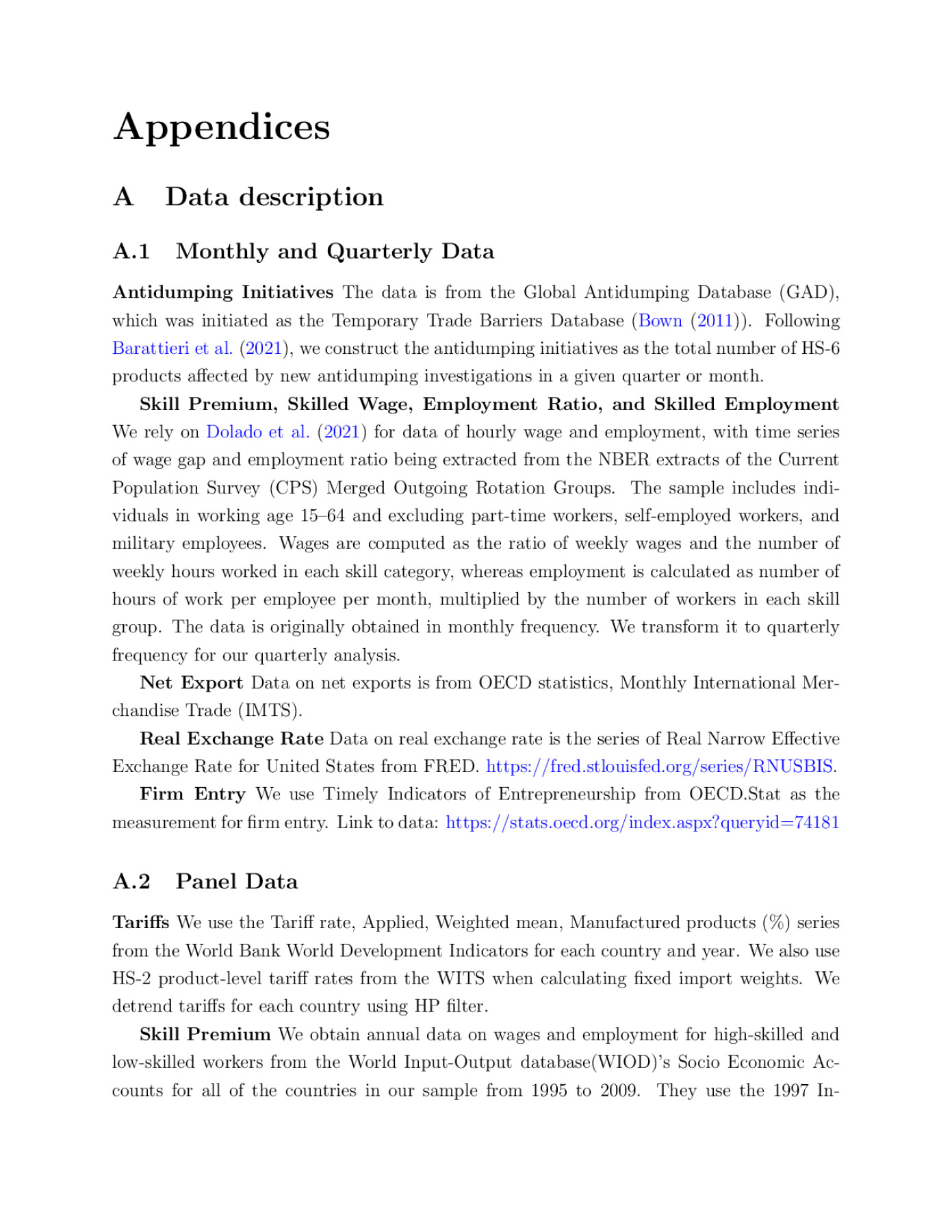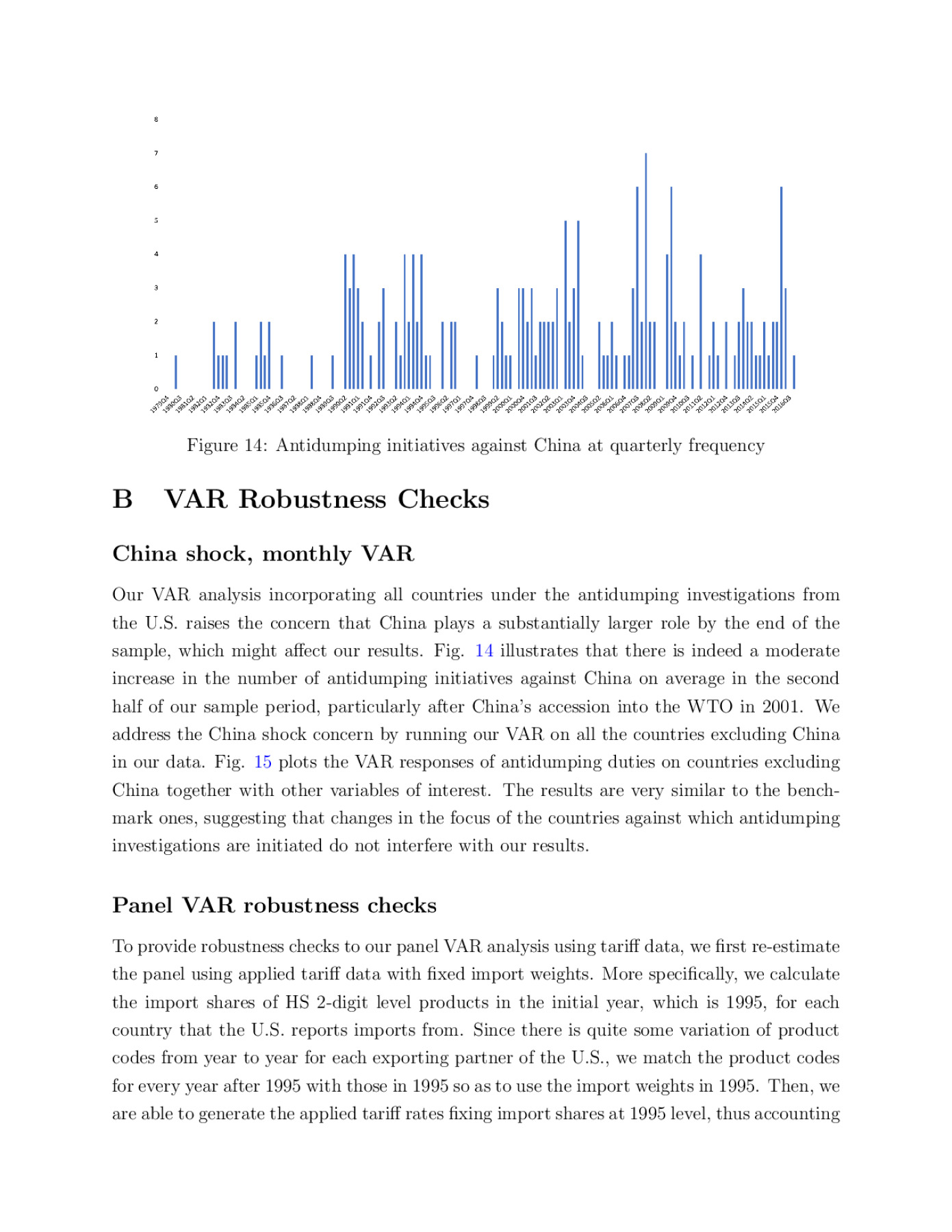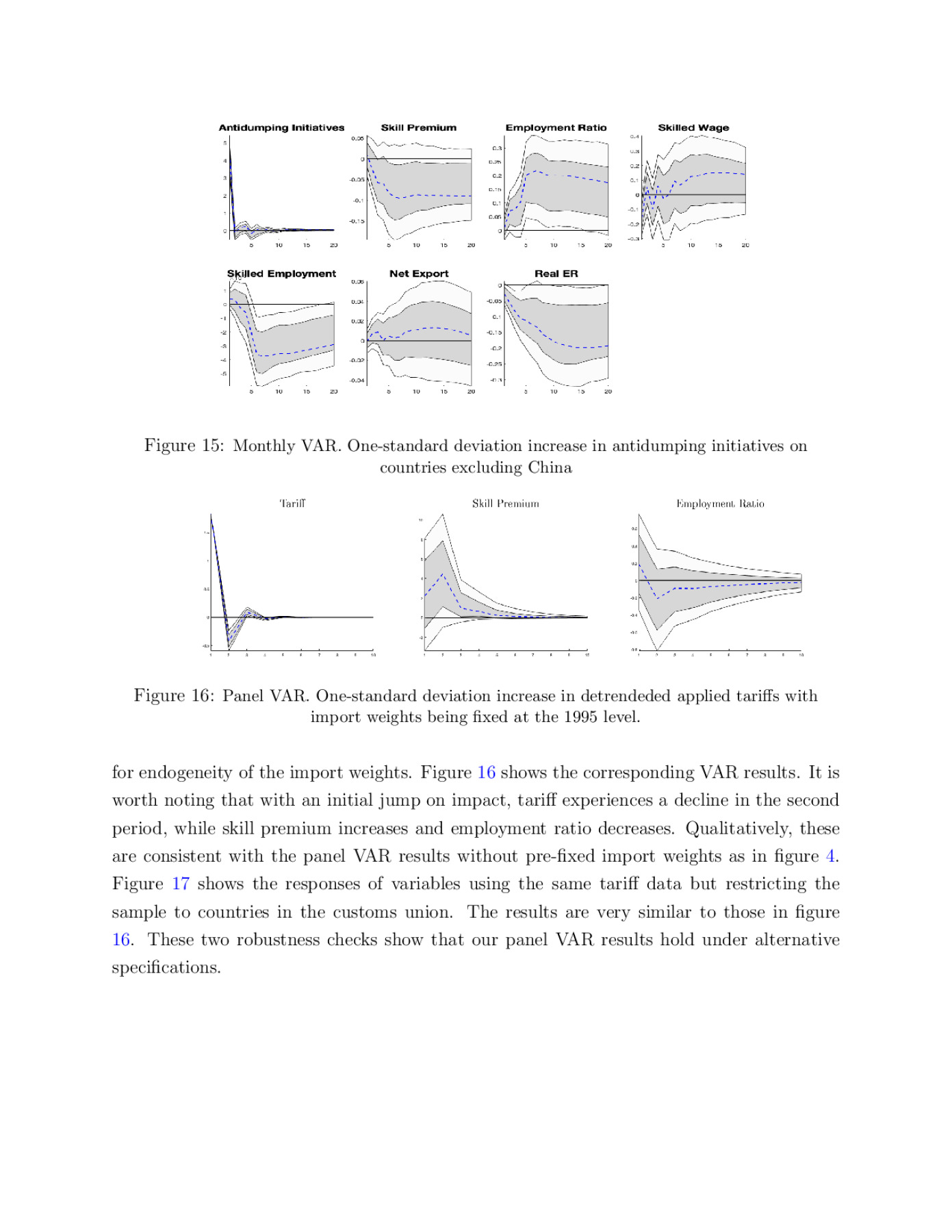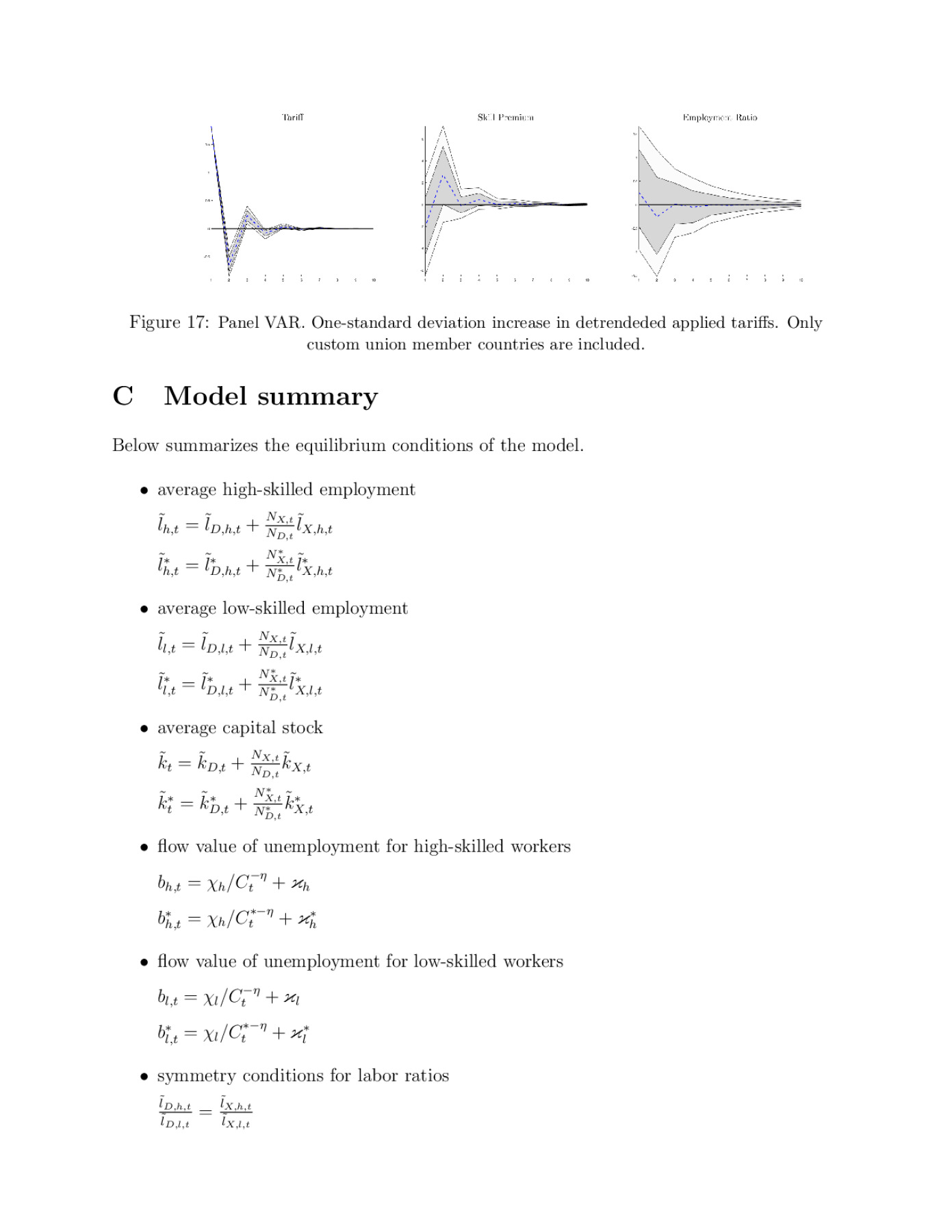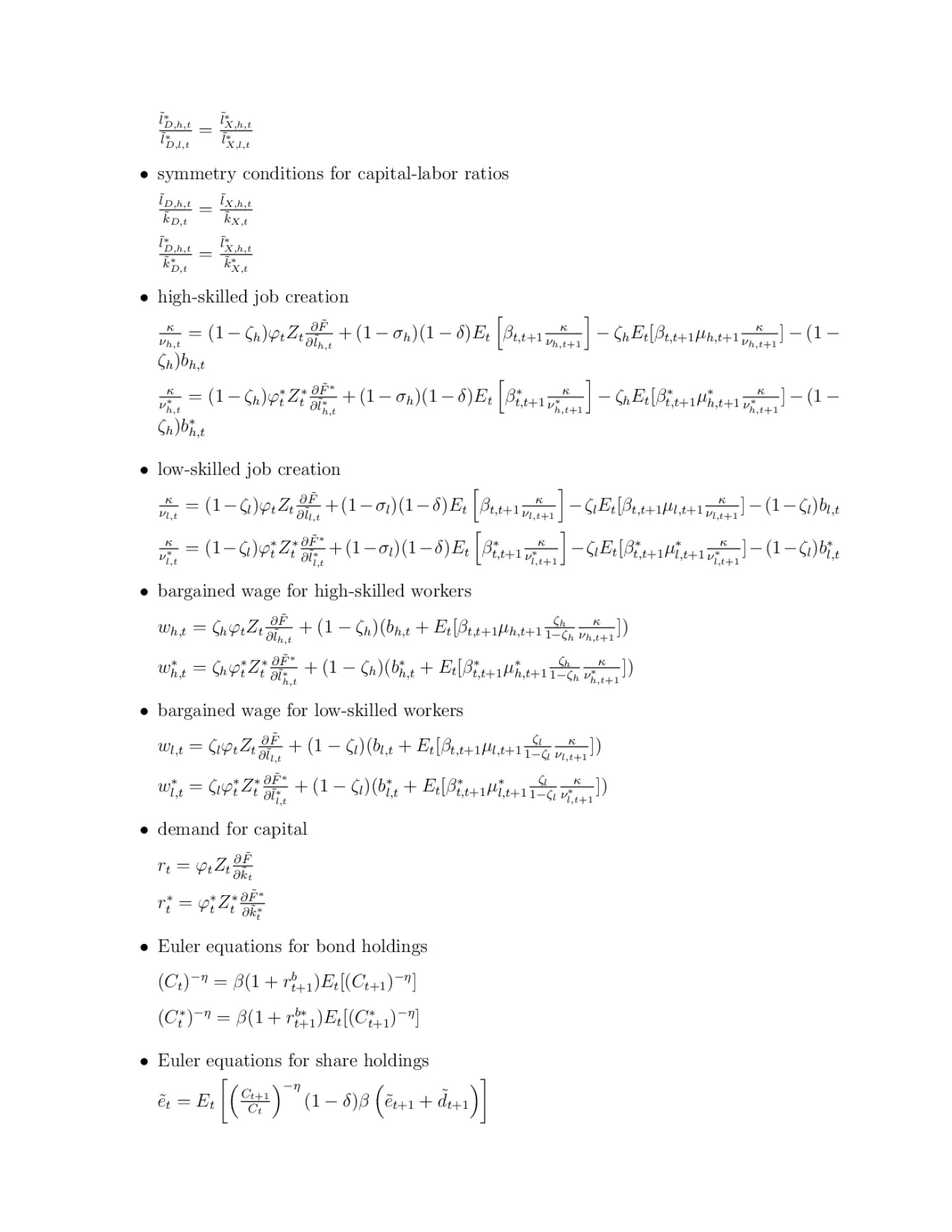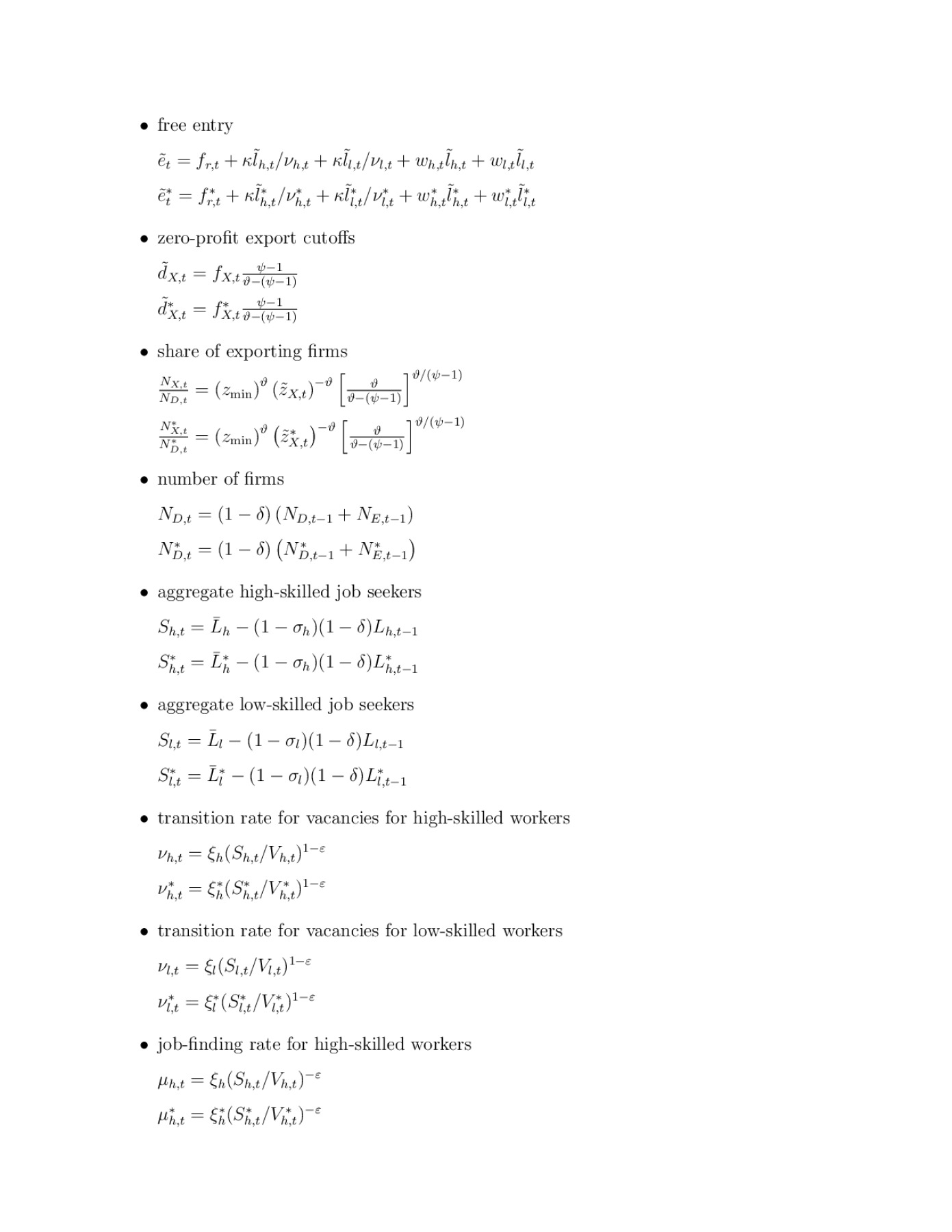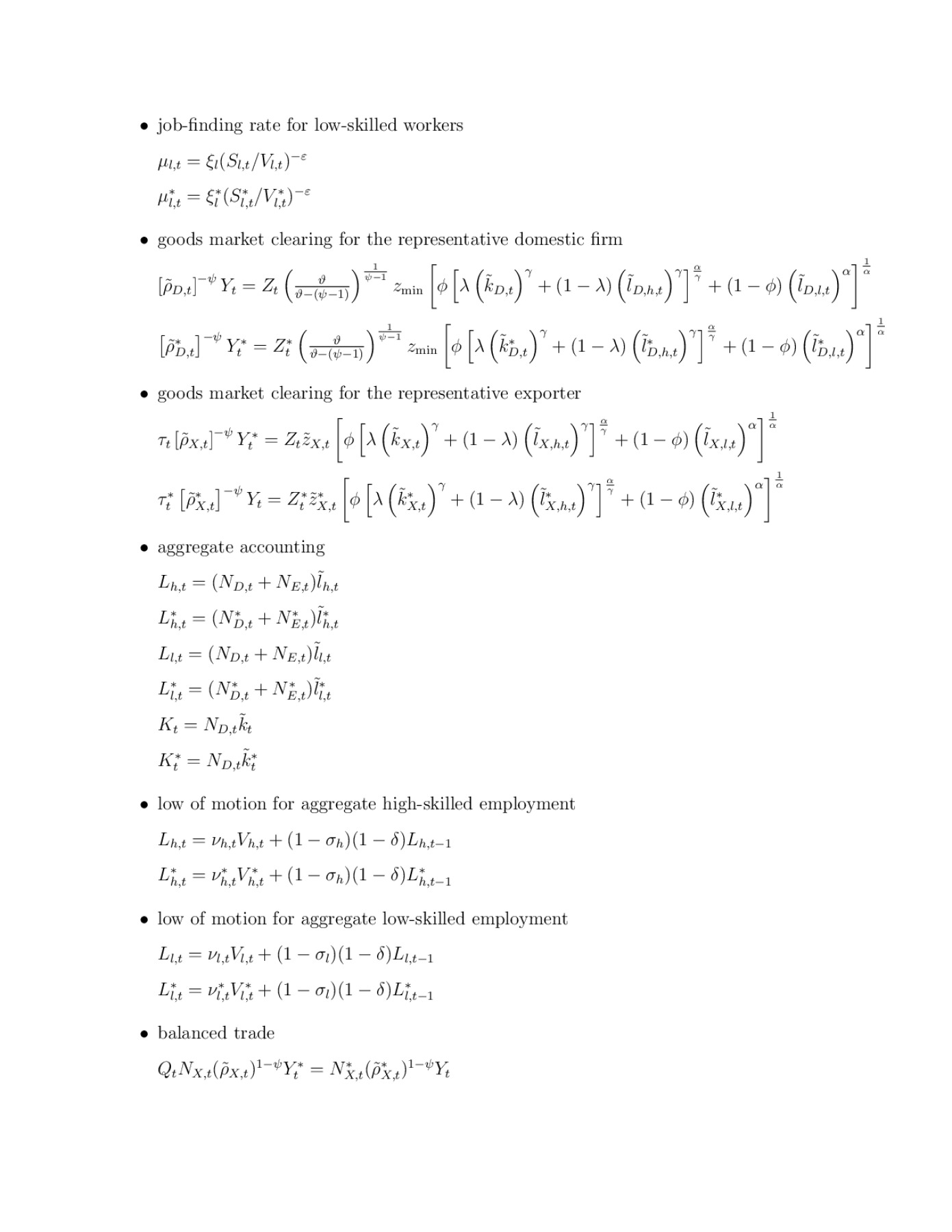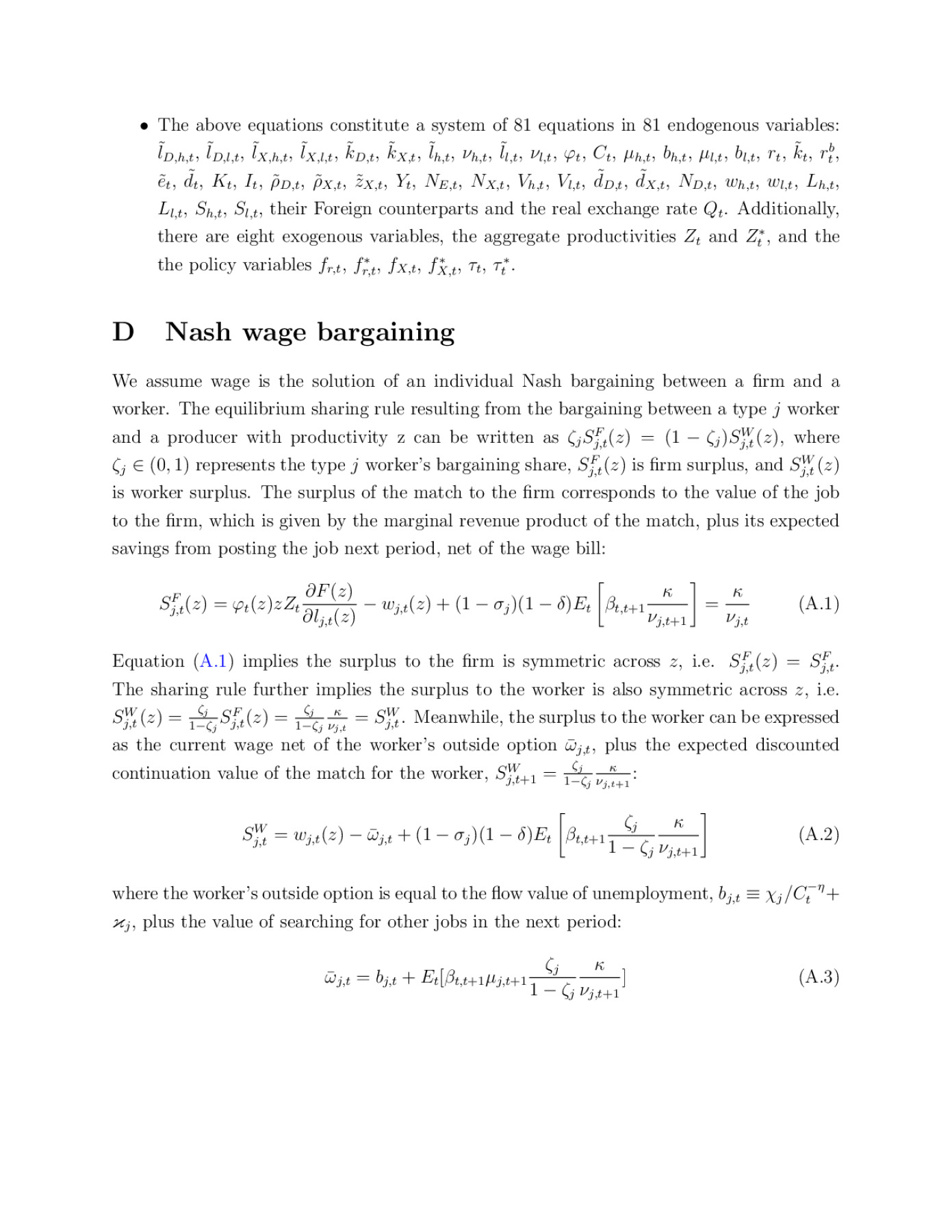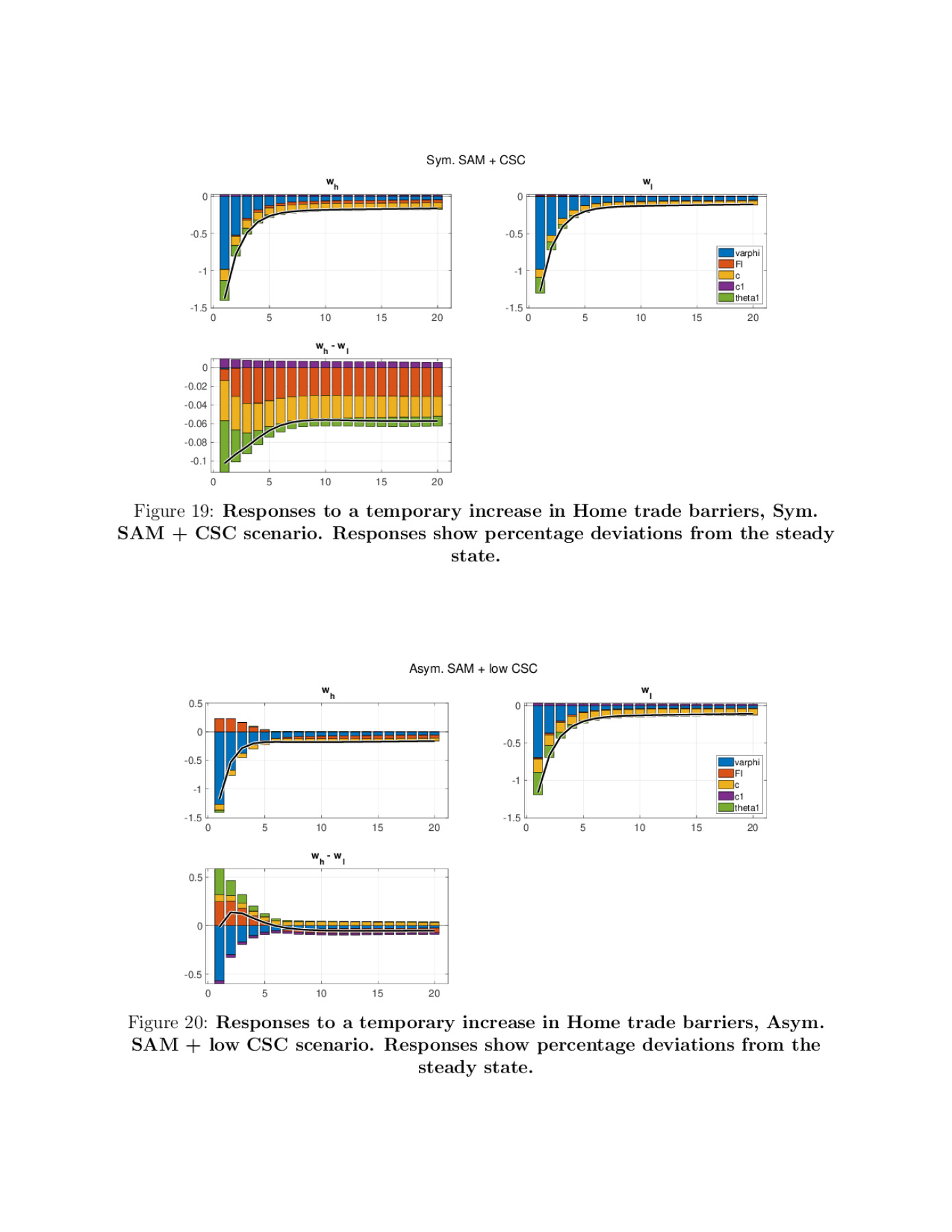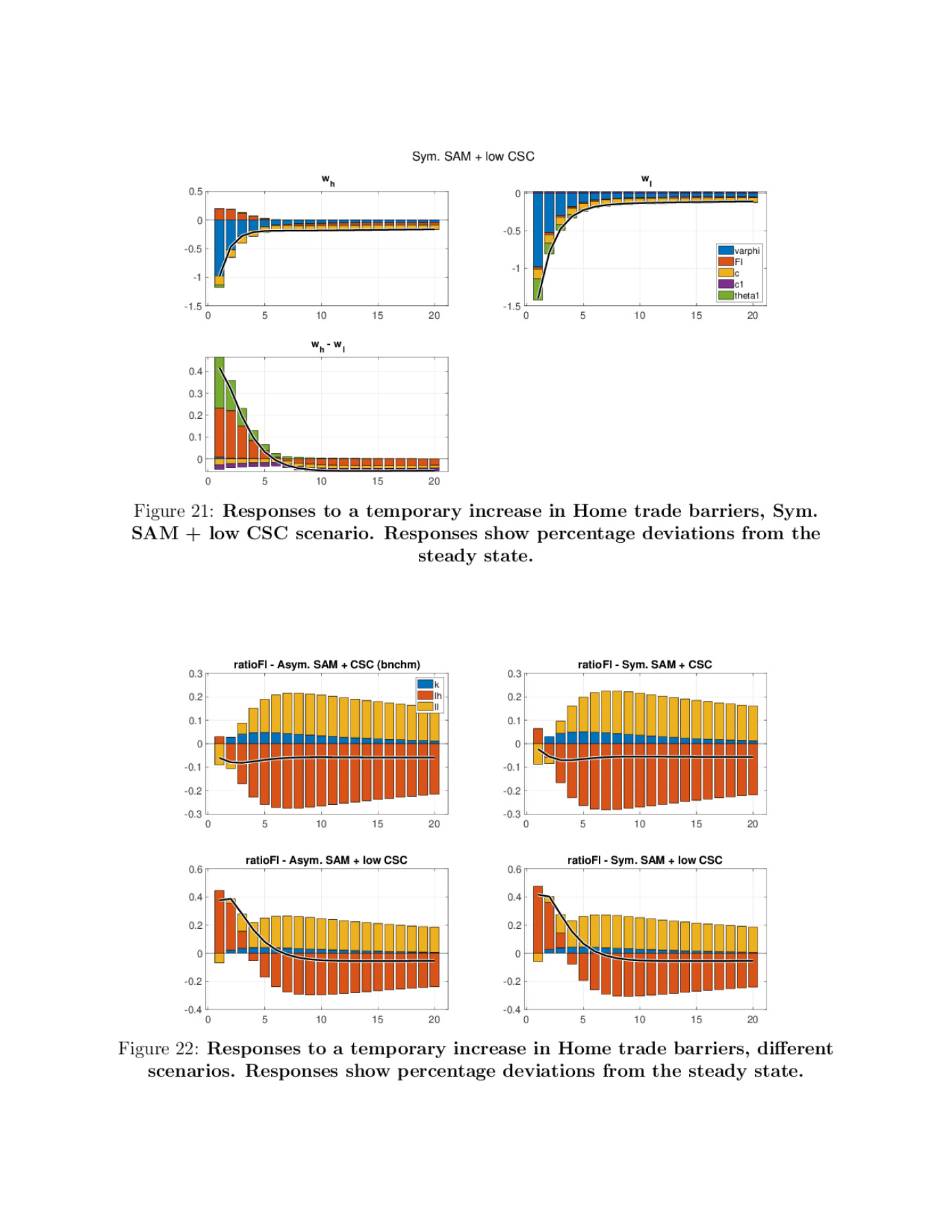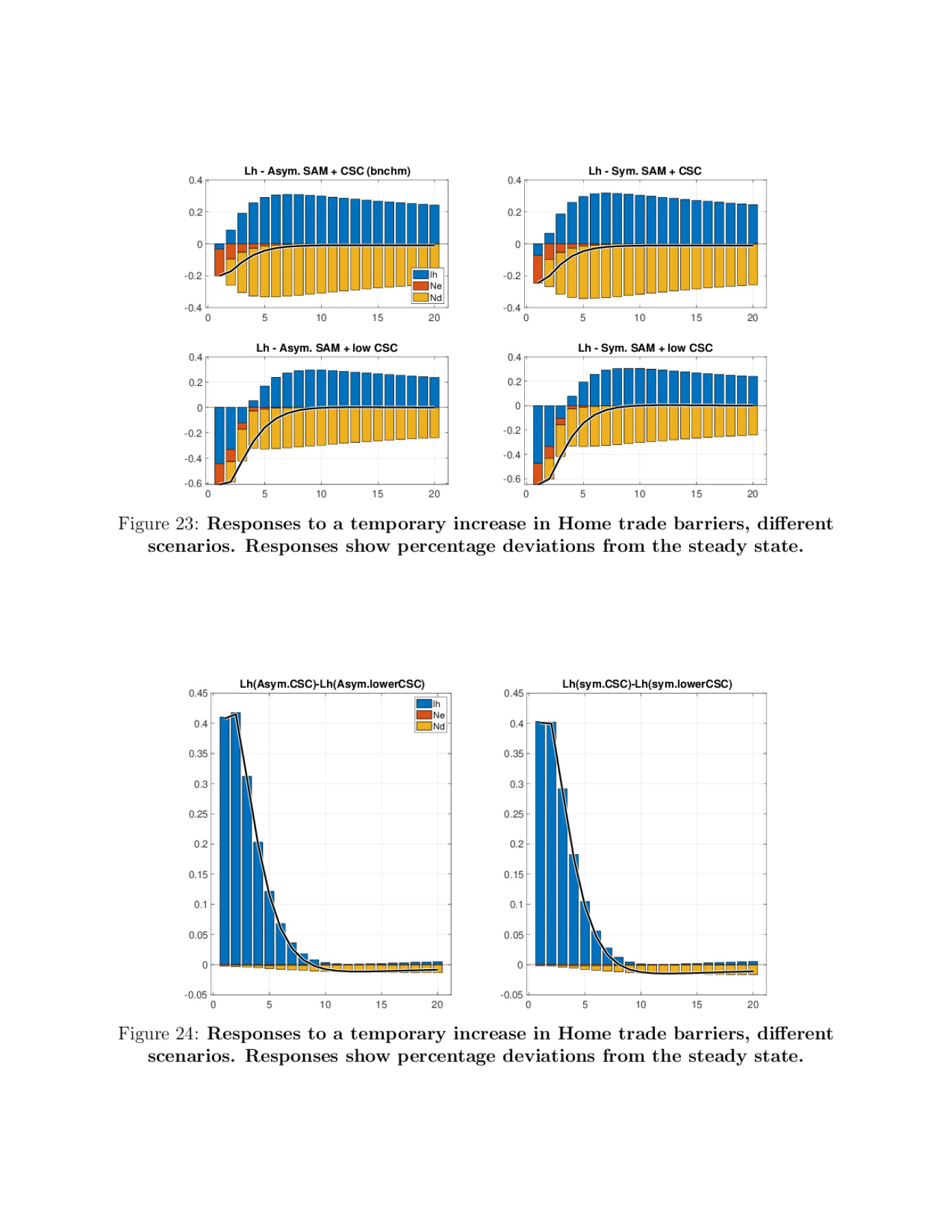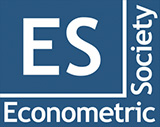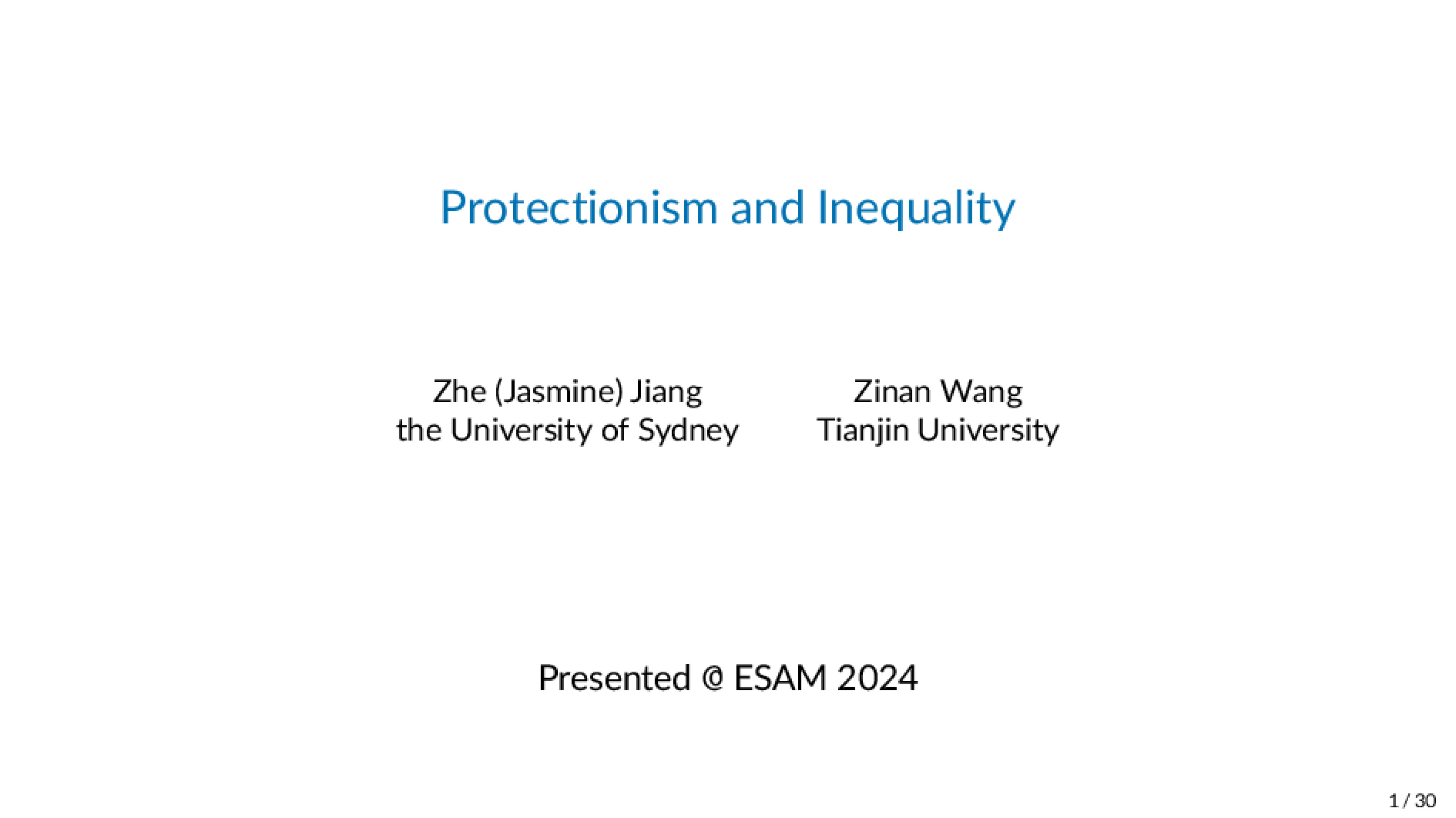2024 Australasia Meeting, Melbourne, Australia: December, 2024
Protectionism and Inequality
Zhe Jiang, Zinan Wang
This paper studies the distributional outcomes of protectionism. First, we investigate
the short-run distributional effects on workers with different skill levels by estimating
structural vector autoregressions (VARs) using high-frequency measures of temporary
trade barriers for the United States. We then estimate a panel VAR for a sample of
thirty-six countries using the applied tariff rates. Across our empirical exercises, we
find robust evidence that protectionism reduces the skill premium but increases the
employment ratio between high-skilled and low-skilled workers. To rationalize these
findings, we build a two-country dynamic general equilibrium model featuring asym-
metric search-and-matching (SAM) frictions, capital-skill complementarity (CSC) in
production and producer dynamics. Our model results successfully replicate the VAR
evidence. Our counterfactual analysis highlights the interaction between asymmetric
SAM and CSC in qualitatively shaping the distributional patterns of protectionism,
with producer dynamics magnifying these effects quantitatively.
the short-run distributional effects on workers with different skill levels by estimating
structural vector autoregressions (VARs) using high-frequency measures of temporary
trade barriers for the United States. We then estimate a panel VAR for a sample of
thirty-six countries using the applied tariff rates. Across our empirical exercises, we
find robust evidence that protectionism reduces the skill premium but increases the
employment ratio between high-skilled and low-skilled workers. To rationalize these
findings, we build a two-country dynamic general equilibrium model featuring asym-
metric search-and-matching (SAM) frictions, capital-skill complementarity (CSC) in
production and producer dynamics. Our model results successfully replicate the VAR
evidence. Our counterfactual analysis highlights the interaction between asymmetric
SAM and CSC in qualitatively shaping the distributional patterns of protectionism,
with producer dynamics magnifying these effects quantitatively.
Preview
